

Microwave Tripping Circuit Breaker? How to Fix It

Your microwave is one of the most energy-hungry appliances in your home. To be able to operate correctly your microwave requires a lot of electricity which can sometimes make it trip the circuit breaker that supplies power to it. It could also be that your microwave has become faulty or an electrical component within your microwave has become defective and will need to be replaced.
If your microwave is tripping the circuit breaker this guide will give you step-by-step instructions for how to fix it. Simply start from the top and work your way down our guide.
Step 1 – Check the circuit breaker
The best place to start is to inspect the circuit breaker to see if it’s becoming overloaded when you use your microwave. If this is the case the circuit breaker may need to be repaired or replaced.
Here’s how to check the circuit breaker:
- Locate your household breaker box.
- Check if your microwave is powered by a dedicated breaker (most likely labeled ‘’microwave”) or if it is powered by a shared breaker (most likely labeled “kitchen”).
- If your microwave is powered by a dedicated circuit breaker, this means it’s probably not the circuit breaker that is causing the problem. However, it’s a good idea to test the circuit breaker to ensure it is working correctly. If the circuit breaker is fine, move on to the next step.
- If your microwave isn’t powered by a dedicated circuit breaker it’s recommended to get an electrician to change your circuit breakers so that it is. This will ensure your circuit breaker has the required voltage to power your microwave.
- Once an electrician has created a dedicated circuit breaker for your microwave, test if the problem has been solved. If not, you’ll need to proceed to the next step in this guide.
Step 2 – Make sure the microwave isn’t at fault
If your microwave has a dedicated circuit breaker, the next step in our guide for how to fix a microwave tripping the circuit breaker is to rule out the problem being caused by a fault with the microwave itself.
Here’s how to make sure your microwave isn’t faulty:
- Start by plugging your microwave into a high amp circuit that you know has a dedicated circuit. If using your microwave makes the breaker trip in a different power outlet this means your microwave is probably faulty and will need to be repaired. If this is the case, proceed to step 3.
- If the microwave works in an alternative power outlet, then the microwave’s usual power socket and/or circuit breaker is the likely cause of the problem so will need to be inspected by a technician if it hasn’t been already (see Step 1, point 4).
Step 3 – Inspect the door safety latch
Within your door safety latch are several switches that are there to ensure the door is closed and the microwave can operate safely. If any of the switches become defective or if the latch hooks become broken your microwave may trip the circuit breaker.
Here’s how to inspect the door safety latch:
- First, check that the latch hooks are not broken. If you find they are damaged, replace the hooks or the entire latch unit.
- If the hooks are fine, disconnect your microwave from the power source and locate the door latch.
- Once located, find the microswitches on the door latch and disconnect them. Once disconnected, test all the switches with a multimeter for continuity, once with the door open and once with the door closed.
- If any of the switches are faulty, they will need to be replaced. If fine, proceed to the next step.
Step 4 – Inspect the turntable motor
Your microwave has a turntable motor that powers the turntable so your microwave can turn around. Sometimes liquid can leak down into the turntable motor causing the motor to become defective which in turn causes the circuit to trip. The best way to avoid this happening is to wipe your microwave out after every use and if any spills occur clean them up quickly.
Here’s how to inspect the turntable motor:
- Unplug your microwave from the power socket.
- Discharge the capacitor. If you don’t know how to do this, it’s recommended that you stop and call a technician as this can be a very dangerous task given the risk of electrical shocks.
- Locate the turntable motor and disconnect the connectors.
- Test the motor with a multimeter to ensure it has continuity.
- If the motor is defective, replace it. If fine, proceed to the next step.
- If you do install a new turntable motor, the next step is to turn your microwave back on and test if this has stopped the circuit breaker from tripping. If the microwave still trips the circuit breaker, proceed to the next step.
Step 5 – Inspect the capacitor
The capacitor stores lots of energy and when you turn your microwave on it helps to ensure the microwave can operate correctly. If the capacitor becomes defective your microwave might make a loud noise when it’s operating and then trip the circuit breaker. Please note that inspecting a capacitor is a very dangerous task and shouldn’t be attempted by anyone that isn’t qualified and/or experienced to do so. This is because they store lots of voltage which means there is a significant risk of electrical shock if they aren’t handled properly.
Here’s how to inspect the capacitor:
- Switch the power off to your microwave.
- Locate the capacitor.
- Discharge the electricity from the capacitor
- Disconnect the connectors from the capacitor.
- Test the capacitor with a multimeter.
- If faulty, the capacitor will need to be replaced or you may decide the better option is to purchase a new microwave.
- If you do replace the capacitor, turn your microwave back on when it has been installed and test if the microwave still trips the circuit breaker. If not, your microwave has been fixed.
Leave a Reply Cancel Reply
You must be logged in to post a comment.
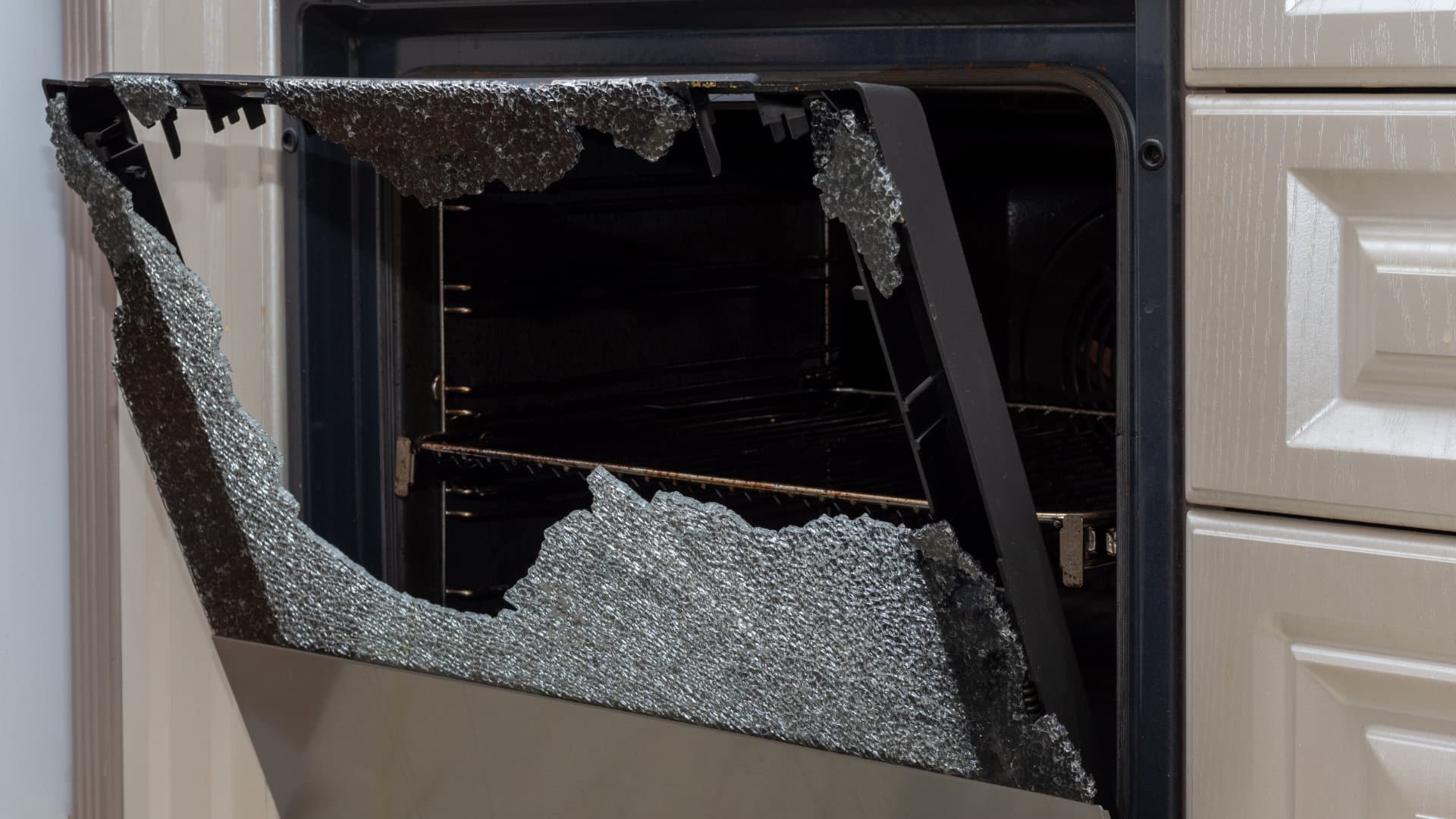
How to Fix an LG Oven F9 Error Code

Whirlpool Fridge Water Not Working, but Ice Is? Here’s Why
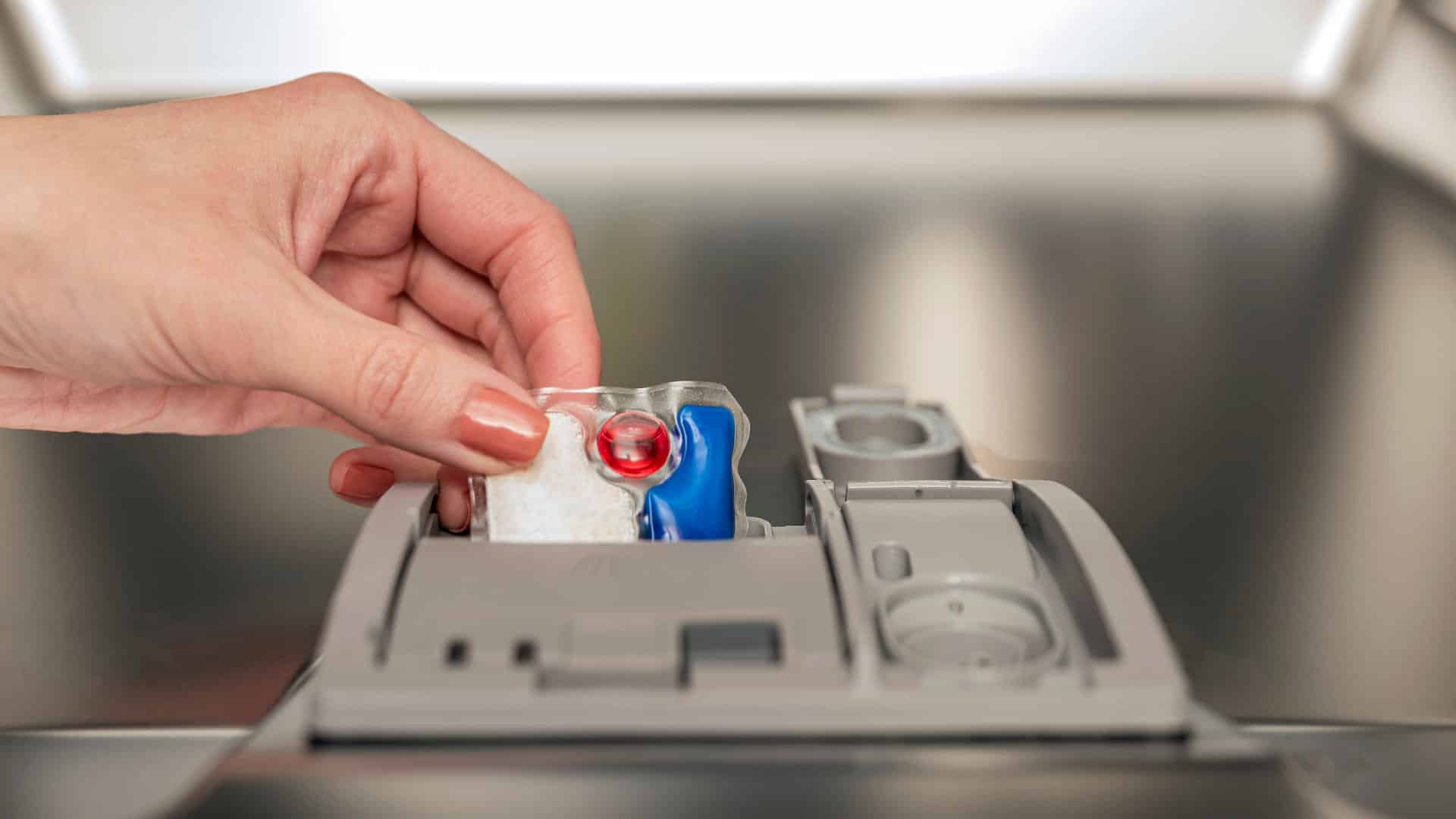
How to Clear E24 Error on Bosch Dishwasher

Samsung Dryer Not Heating Properly? (5 Fixes)
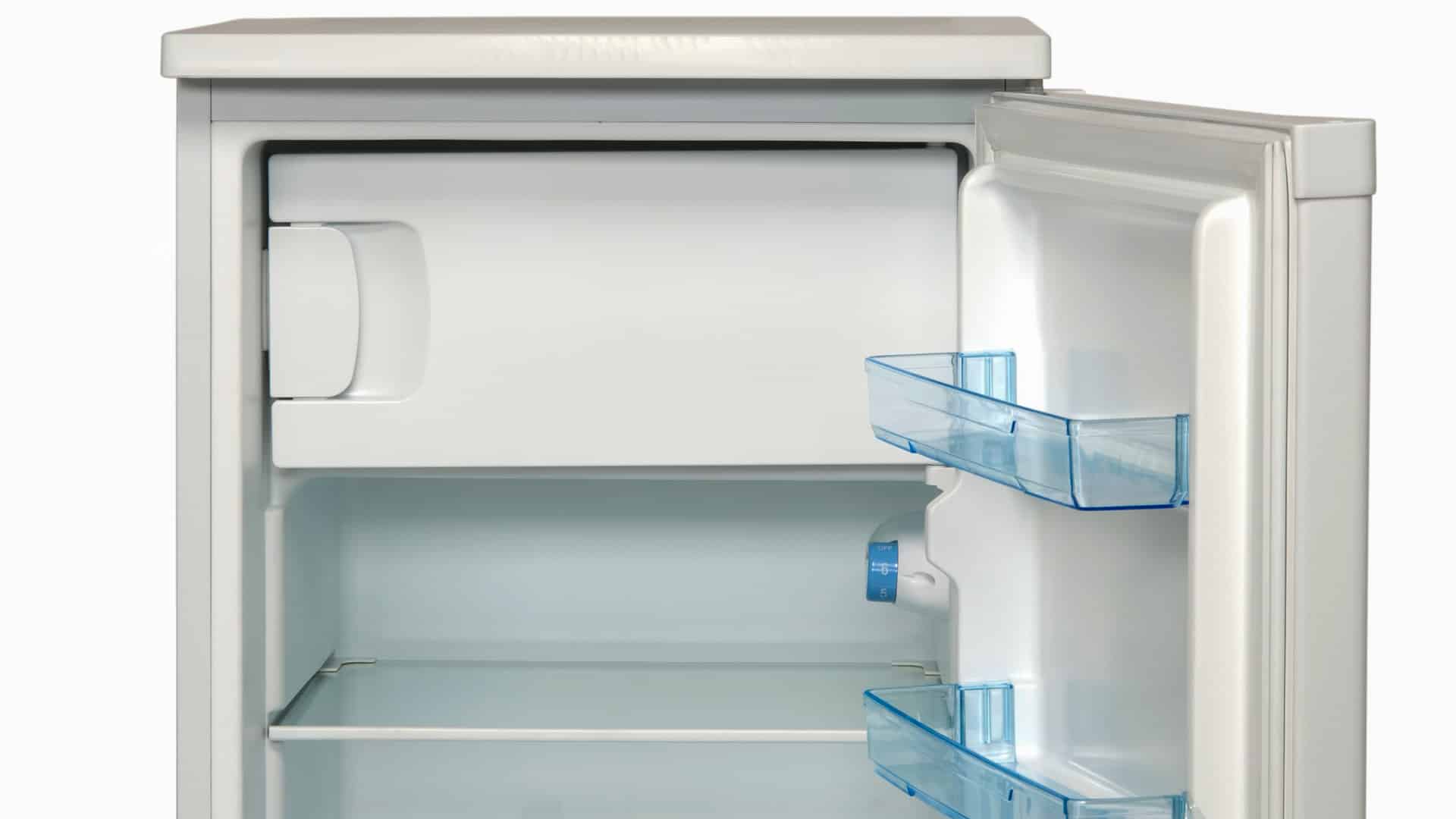
Why Is Your Mini Fridge Not Cooling? (5 Potential Reasons)
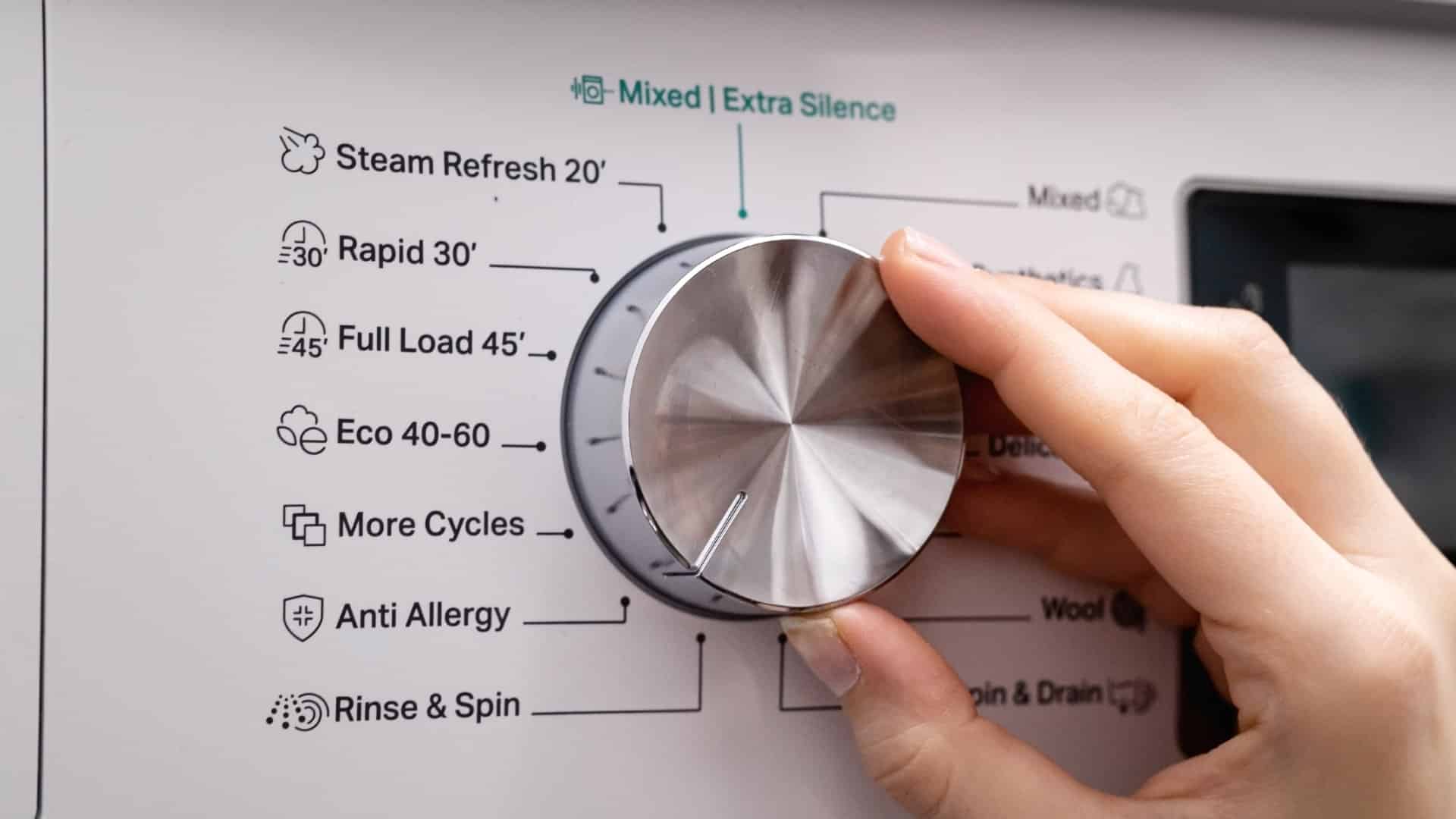
How to Fix Samsung Washer Error Code 4C
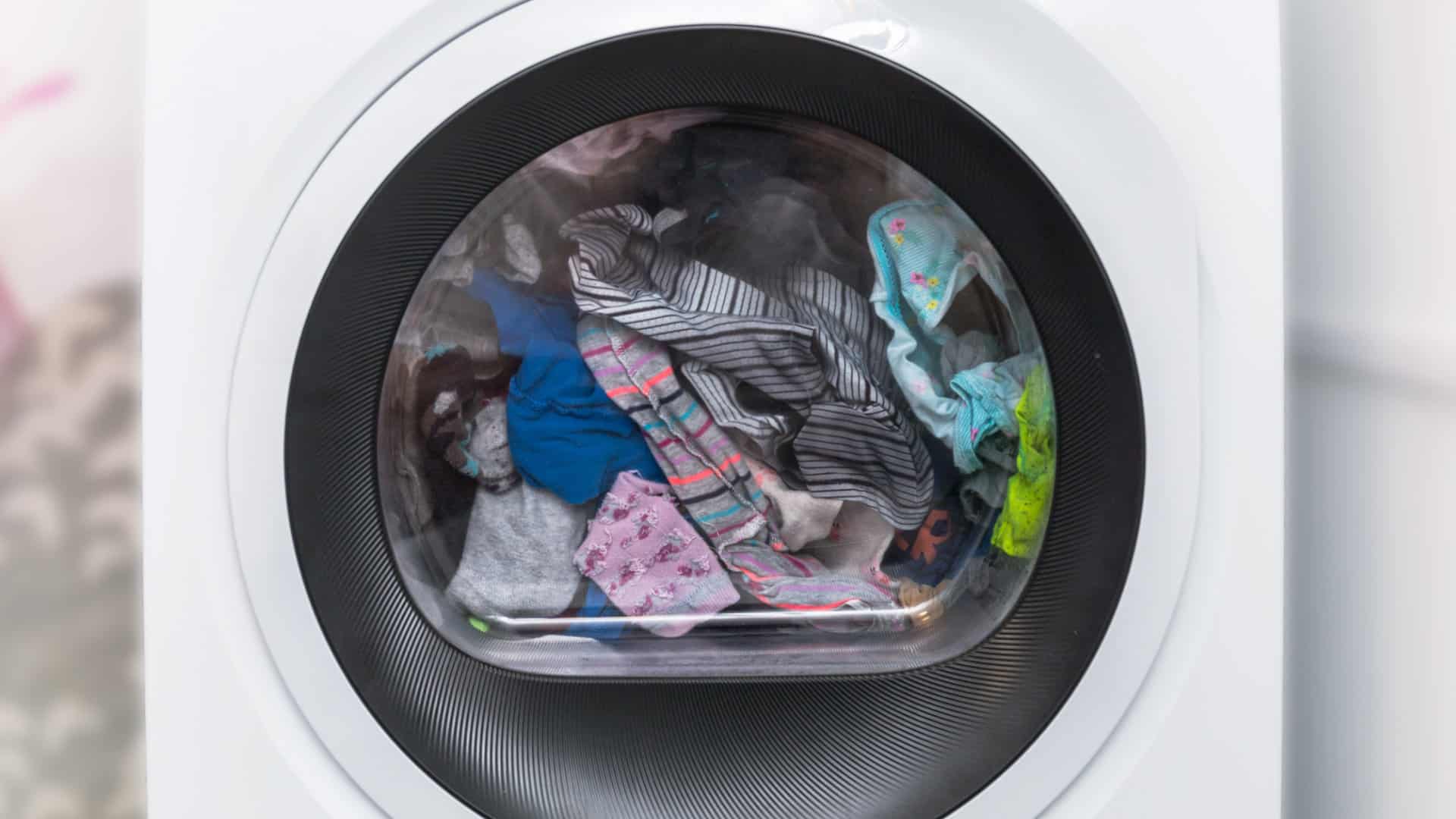
How to Resolve UE Error Code on your LG Washer
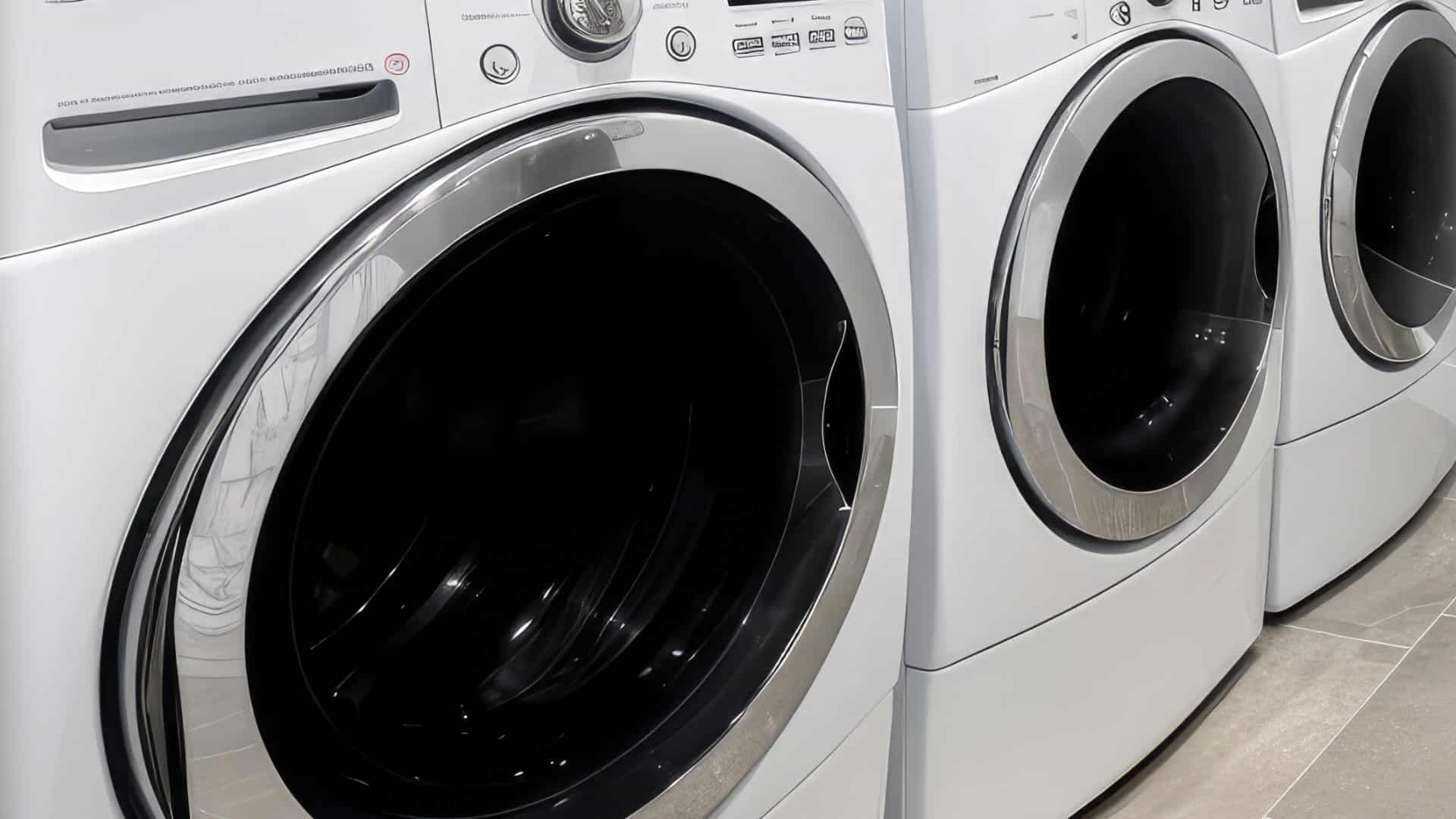
LG Washing Machine Error Codes: How to Fix Them
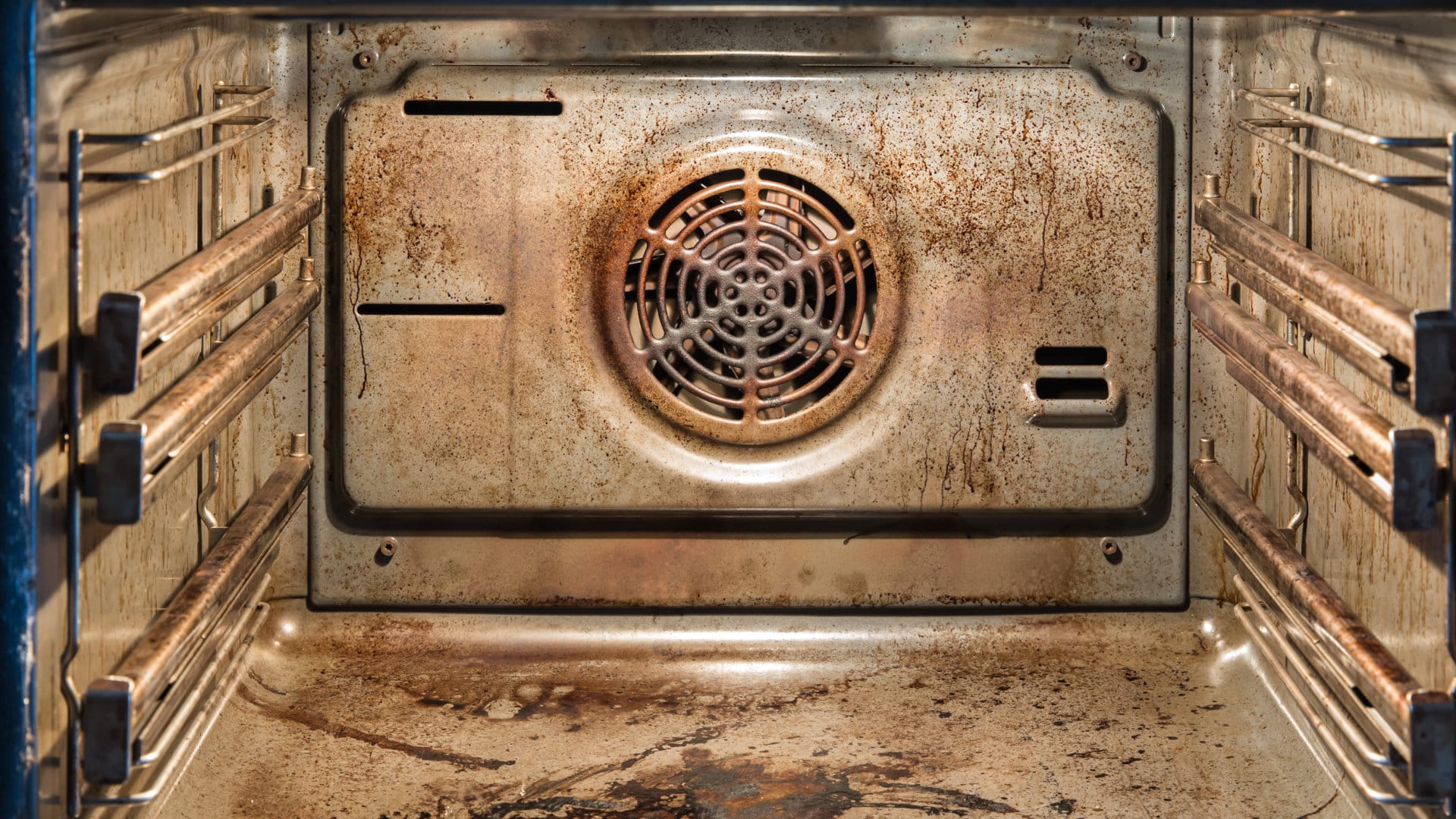
How to Unlock LG Oven Door (After Self-Cleaning)
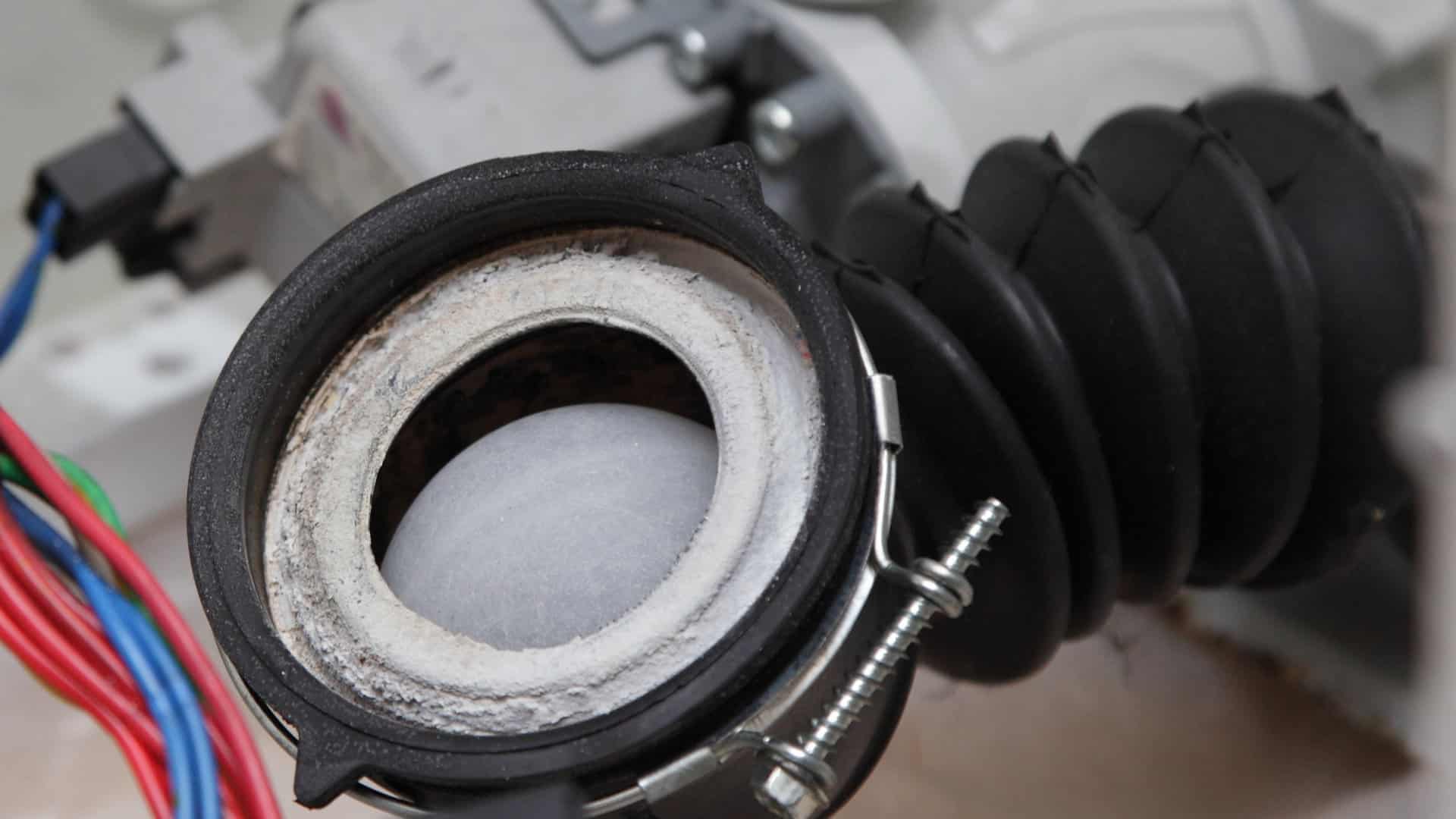
How to Fix LG Washer DE Error Code

Why Your Microwave Is Not Working
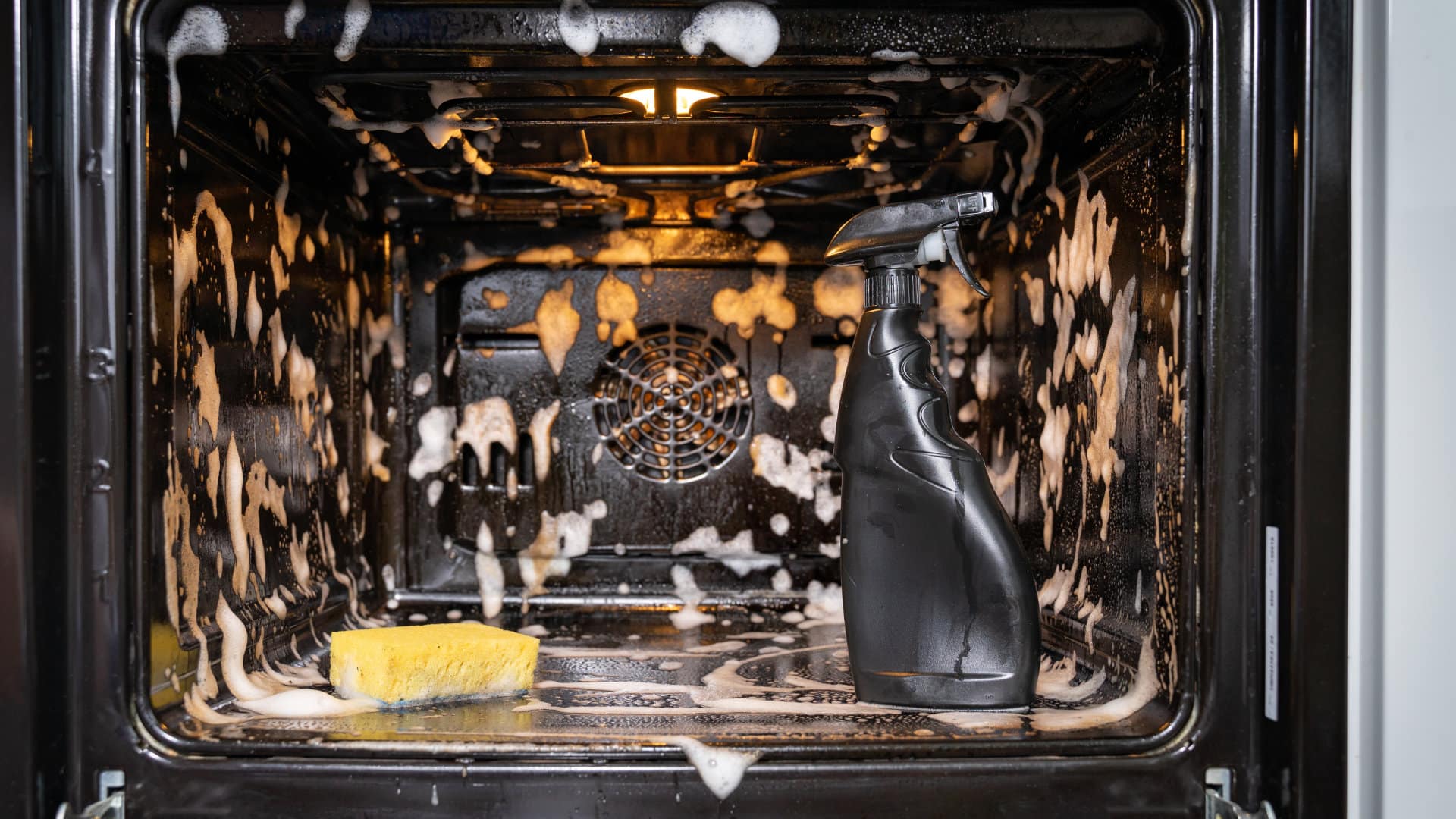
The Quick Guide To Using a GE Self-Cleaning Oven

How to Clean Your Dishwasher with Vinegar

How to Fix a Noisy Refrigerator
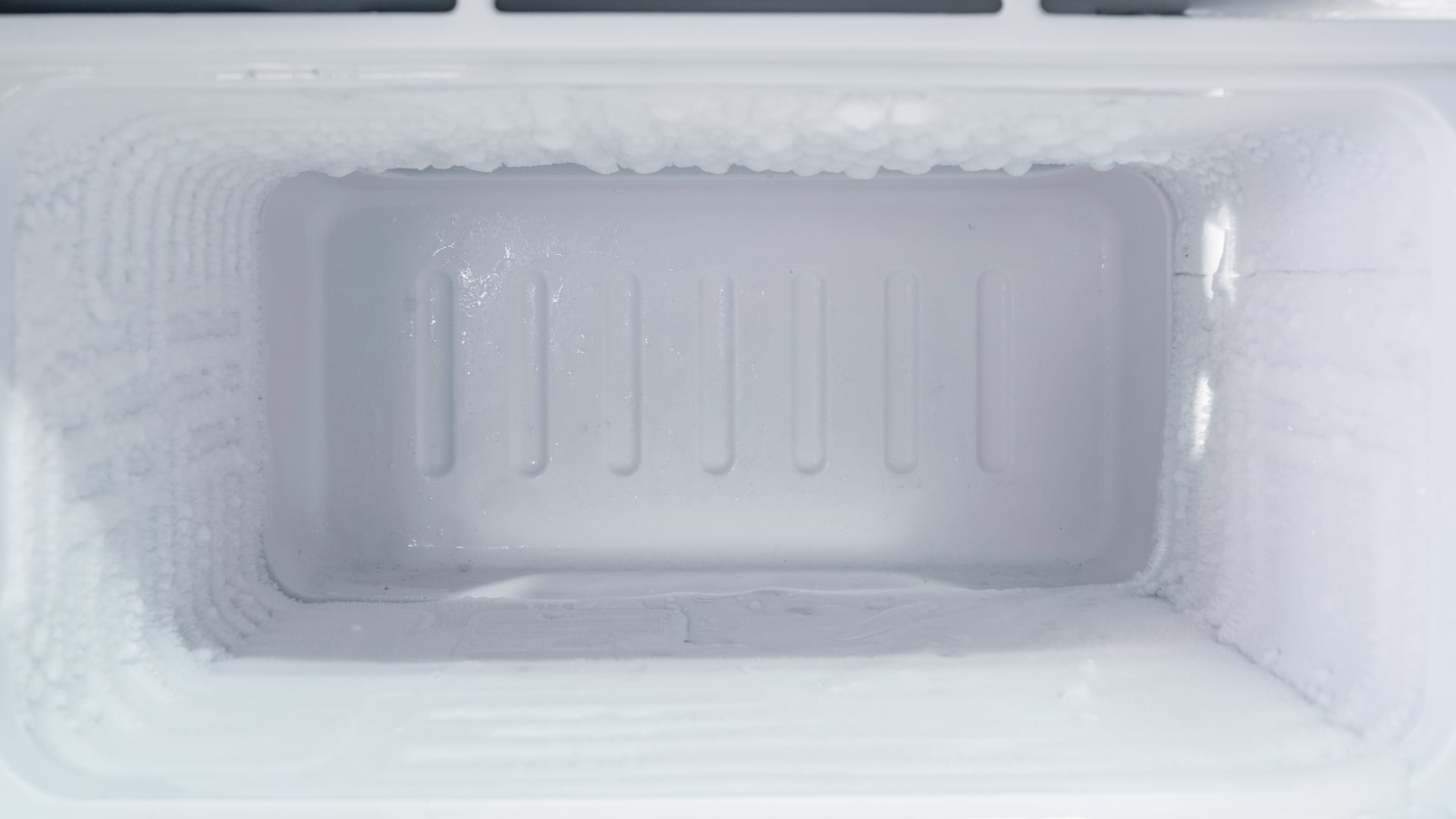
How to Remove Frost Build-up from the Freezer
- Schedule Service
- Call (661) 587-1300
- Call (661) 587 – 1300
- Track Your Technician
- Check Your Job Status
- Customer Reviews
- What We Service
- Pay My Bill
- Leave a Review
- News and Tips
Why Your Microwave Trips The Circuit Breaker (and How To Fix It)
What To Know
- If other appliances are also consuming power, such as a toaster or air conditioner, the combined load can exceed the capacity of the circuit.
- If the wiring in your home is old or inadequate, consider upgrading it to handle the power requirements of the microwave.
- Locate the circuit breaker panel and flip the breaker that controls the microwave to the “off”.
A microwave oven is an indispensable kitchen appliance that makes our lives easier . However, it can be frustrating when it unexpectedly trips the circuit breaker , leaving us in the dark and without our favorite meals. Understanding the reasons behind this issue is crucial for preventing future occurrences and ensuring a smooth and safe microwave experience.
Electrical Overload
One of the most common causes of microwave circuit breaker trips is electrical overload . When the microwave is operating at high power, it draws a significant amount of electricity. If other appliances are also consuming power, such as a toaster or air conditioner, the combined load can exceed the capacity of the circuit. This overloads the circuit and triggers the breaker to trip as a safety measure.
Faulty Microwave
A malfunctioning microwave can also cause circuit breaker trips . A faulty magnetron, the component responsible for generating microwaves, can draw excessive current, leading to an overload. Additionally, damaged wiring or loose connections can create electrical shorts that trip the breaker.
Inadequate Wiring
The wiring in your home may not be able to handle the power requirements of the microwave. If the wires are too thin or old, they may not be able to carry the high amperage needed by the appliance. This can lead to overheating and circuit breaker trips.
Power Surges
Power surges are sudden increases in voltage that can damage electrical appliances . These surges can occur during thunderstorms or when other heavy electrical equipment is used. A power surge can overload the microwave and trip the circuit breaker.
Faulty Circuit Breaker
In rare cases , the circuit breaker itself may be faulty. A damaged or worn-out breaker may trip prematurely or fail to trip when necessary. If you suspect a faulty circuit breaker, it’s important to have it inspected by a licensed electrician.
How to Prevent Microwave Circuit Breaker Trips
- Avoid overloading the circuit: Use the microwave on a dedicated circuit or avoid using other high-power appliances simultaneously.
- Have the microwave serviced regularly: A qualified technician can inspect the microwave for any potential electrical issues and make necessary repairs.
- Upgrade the wiring: If the wiring in your home is old or inadequate, consider upgrading it to handle the power requirements of the microwave.
- Protect against power surges: Install a surge protector on the microwave’s electrical outlet.
- Replace the circuit breaker: If the circuit breaker is faulty, have it replaced by a licensed electrician.
Troubleshooting Tripped Microwave Circuit Breaker
- Reset the circuit breaker: Locate the circuit breaker panel and flip the breaker that controls the microwave to the “off” position. Wait a few seconds and then flip it back to the “on” position.
- Check the microwave: Unplug the microwave and inspect the power cord for any damage. If the cord is damaged, do not use the microwave and contact a qualified technician.
- Try a different outlet: Plug the microwave into a different outlet to see if the issue persists.
- Call an electrician: If the problem continues, call a licensed electrician to diagnose and repair the issue.
The Final Word: Microwave Circuit Breaker Harmony
Understanding the reasons why a microwave trips the circuit breaker sometimes is essential for preventing this frustrating occurrence. By addressing electrical overload , faulty microwaves , inadequate wiring, power surges, and faulty circuit breakers, you can ensure that your microwave operates safely and efficiently, making your kitchen life a breeze. Remember, if you encounter any persistent issues, don’t hesitate to seek professional assistance from a qualified electrician.
Popular Questions
Q: Why does my microwave trip the circuit breaker every time I use it? A: This could indicate an electrical overload , a faulty microwave , or inadequate wiring. It’s important to have the issue diagnosed by a qualified technician.
Q: Can I use a higher-amperage circuit breaker to prevent trips? A: No, using a higher-amperage circuit breaker is not recommended. It could create a safety hazard and damage the microwave or other appliances.
Q: What are the signs of a faulty circuit breaker? A: A faulty circuit breaker may trip prematurely , fail to trip when necessary, or show signs of damage or discoloration.
Related Articles
Did you know dairy queen microwaves their burgers, learn how to microwave 2 packs of ramen: the simplest way to cook a, the ultimate guide: how to clean your microwave with baking soda and vinegar, can you believe this you won’t believe what this amazing new study says about your toasted bread and your microwave oven, leave a reply / feedback cancel reply.
Your email address will not be published. Required fields are marked *
Save my name, email, and website in this browser for the next time I comment.

Resolve It: How to Fix Microwave Tripping Circuit Breaker
If your microwave keeps tripping the circuit breaker, you’re not alone. This common issue can be frustrating, but there are steps you can take to resolve it. In this article, we’ll provide a comprehensive guide on how to fix a microwave tripping circuit breaker.
Before diving into solutions, it’s essential to understand why your microwave may be tripping the circuit breaker. Here, we’ll explore common causes and provide troubleshooting tips to help you identify the underlying problem. We’ll guide you through checking the power supply and outlet, inspecting the microwave cord and plug, resetting the circuit breaker, testing with different power levels, checking microwave components, and cleaning and maintenance.
By following our guide, you’ll be well-equipped to resolve the issue and enjoy the convenience of your microwave once again.
Key Takeaways:
- Understanding the cause of the issue is essential to finding a solution.
- Checking the power supply and outlet, inspecting the microwave cord and plug, and resetting the circuit breaker can solve the problem in some cases.
- Testing with different power levels and checking various components inside the microwave can help isolate the issue.
- Regular cleaning and maintenance can prevent circuit breaker tripping.
- If all else fails, seeking professional help may be necessary.
Understanding Microwave Circuit Breakers
If you’re experiencing issues with your microwave circuit breaker tripping repeatedly, it’s important to understand the underlying problem before attempting any fixes. Microwave circuit breakers are designed to shut off power when they detect an electrical overload or short circuit. There are several possible reasons why your microwave may be causing the circuit breaker to trip, including:
- Power surges or spikes
- Loose or damaged connections
- Faulty components inside the microwave
Fortunately, troubleshooting a microwave circuit breaker is a relatively straightforward process. In the following sections, we’ll explore common causes and provide step-by-step instructions on how to resolve the issue and get your microwave running smoothly once again.
Common Causes of Microwave Circuit Breaker Tripping
Some of the most common causes of a circuit breaker tripping in a microwave include:
By identifying the underlying cause of the issue, you can effectively troubleshoot and fix the problem.
Troubleshooting a Microwave Circuit Breaker
If your microwave is tripping the circuit breaker, you can try a few troubleshooting steps to identify and fix the issue:
- Check the power supply and outlet connections to ensure they are secure and undamaged.
- Inspect the microwave cord and plug for any signs of damage, such as frayed wires or burn marks.
- Reset the circuit breaker by turning it off and back on again.
- Test the microwave with lower power levels to see if high power is causing the issue.
- If the above steps don’t work, check the components inside the microwave, such as the magnetron or capacitor, for any signs of damage.
If you’re still experiencing issues after attempting these steps, it may be time to seek professional assistance from a qualified technician.
Now that you understand the common causes of microwave circuit breaker tripping and how to troubleshoot the issue, you can take the necessary steps to fix the problem and ensure your microwave is running safely and efficiently.
Checking Power Supply and Outlet
If your microwave is causing the circuit breaker to trip, the first thing to check is the power supply and outlet. Here are the steps to follow:
- Unplug the microwave from the outlet.
- Check the outlet for any signs of damage, such as burn marks or loose connections. If you notice any issues, it’s important to have a qualified electrician fix the problem before using the outlet again to prevent any electrical hazards.
- Plug the microwave into a different outlet, preferably on a different circuit to see if the same issue occurs. If the microwave works fine without tripping the circuit breaker, the problem is likely with the original outlet rather than the appliance itself.
- If the microwave continues tripping the circuit breaker, try plugging a different appliance into the same outlet. If the other appliance also trips the circuit breaker, the issue is with the outlet rather than the microwave.
If you’ve determined that the outlet is the source of the issue, it’s best to call a professional electrician to replace the outlet or fix any wiring problems.
Inspecting Microwave Cord and Plug
If your microwave continues to trip the circuit breaker despite resetting it, the issue could be with the cord and plug. A damaged cord or plug can cause excessive current draw, leading to circuit breaker tripping. Follow the steps below to inspect the cord and plug for any signs of damage:
- Unplug the microwave . Before inspecting the cord and plug, make sure to unplug the microwave from the power source to avoid electrical shock.
- Inspect the cord . Look for any frays, cuts, or cracks in the cord insulation. If you find any damage, replace the cord or consult a professional technician for repair.
- Check the plug . Gently tug on the plug to make sure it is securely attached to the cord. Inspect the prongs for any bending or cracking. If you find any damage or a loose connection, replace the plug or consult a professional technician for repair.
If you’ve identified any damage to the cord or plug, it’s important to replace them right away. Continuing to use a damaged cord or plug can lead to electrical hazards and further damage to your microwave.
However, if the cord and plug appear to be in good condition, but the microwave continues to trip the circuit breaker, it could be due to an internal component issue. Continue to the next section for more troubleshooting steps.
Resetting the Circuit Breaker
If your microwave keeps tripping the circuit, resetting the circuit breaker can potentially solve the problem. However, it’s important to take certain precautions to avoid electrical hazards.
Before resetting the circuit breaker, turn off and unplug all appliances connected to the circuit. This will prevent any sudden power surges or electrical shock.
Locate the circuit breaker panel and look for the tripped breaker. It should be in the middle or “off” position. Flip the breaker all the way to the “on” position, then wait a few seconds before turning on your microwave again.
If resetting the circuit breaker doesn’t fix the issue, it may be an indication of a deeper problem. Proceed to the next step to identify any underlying causes.
Alt tag: Resetting the circuit breaker to fix microwave tripping power breaker issues.
Testing with Different Power Levels
If your microwave is tripping the safety switch or circuit breaker, it could be due to high power levels. Testing your microwave with different power levels can help determine if this is the issue. Here’s how to do it:
- Start by setting your microwave to the lowest power level. The exact setting may vary depending on the model of your microwave, but it’s usually labeled as “Defrost” or “Low”.
- Run the microwave for a short amount of time, around 30 seconds to a minute.
- Gradually increase the power level after each interval and repeat the process until you reach the highest power level.
- If the circuit breaker or safety switch doesn’t trip during any of these tests, the issue may be resolved by simply using a lower power level to operate your microwave.
If your microwave still trips the circuit breaker, it’s time to move on to the next troubleshooting step.
Checking Microwave Components
If the power supply, outlet, and cord are all in good condition, the problem may lie within the microwave components.
One of the most common culprits is the magnetron, responsible for producing the microwave frequency. If it is faulty, it can cause the circuit breaker to trip. To check the magnetron, you will need a multimeter. Follow these steps:
- Ensure the microwave is unplugged.
- Locate the magnetron, typically found behind the control panel.
- Disconnect the magnetron’s wiring.
- Set the multimeter to resistance mode and place the probes on the magnetron terminals.
- If the multimeter reads anything other than infinite resistance, the magnetron is faulty and needs to be replaced.
Other components that can cause circuit breaker tripping include the capacitor and diode. If you’re unsure how to check these, it’s best to seek professional help to avoid potential harm to yourself or the microwave.
Remember, safety always comes first. Never attempt to repair the microwave if you’re unsure of what you’re doing. Seek professional assistance if necessary, and always unplug the microwave before attempting any repairs.
Cleaning and Maintenance
Keeping your microwave clean and well-maintained is crucial in preventing future circuit breaker tripping. Over time, dirt and debris can build up inside the microwave, leading to malfunctions. Here are some simple yet effective steps you can take for regular cleaning and maintenance.
- Wipe down the interior of the microwave with a damp cloth after each use to remove any spillage or splatters.
- Use mild soap or dishwashing detergent to clean any stubborn stains.
- Pay extra attention to the door seal and hinges, which can accumulate dirt and grease.
- Remove and wash the turntable and support roller if applicable, following the manufacturer’s instructions.
- Use a soft, dry cloth to wipe the exterior of the microwave.
- Regularly inspect the power cord and plug for any signs of damage or wear, such as fraying or discoloration, and replace if necessary.
By following these maintenance tips, you can help prolong the lifespan of your microwave and prevent future circuit breaker tripping.
Example of a Cleaning Schedule for Your Microwave
By following a regular cleaning schedule, you can ensure that your microwave is in top condition and avoid any potential circuit breaker tripping.
Seeking Professional Help
If you’ve tried the troubleshooting steps outlined in this article and your microwave is still tripping the circuit breaker, it’s time to seek professional help. A qualified technician will be able to diagnose and fix the issue, ensuring your microwave operates smoothly and safely.
Don’t attempt to repair the microwave yourself, as this could be dangerous and cause further damage to the appliance. Instead, look for a reputable repair service in your area that specializes in microwave repairs.
When choosing a repair service, be sure to read reviews and check their credentials. A reliable and experienced technician will have the necessary training and equipment to diagnose and fix the issue quickly and efficiently.
Remember, safety should always be your top priority when dealing with faulty appliances. Don’t hesitate to seek professional help if you’re unsure or uncomfortable with the repair process.
Microwave keeps tripping circuit breaker? Seeking professional help from a qualified technician is the safest option to get your microwave working properly again.
Preventing Future Tripping
If you’ve successfully resolved the issue with your microwave tripping the circuit breaker, congratulations! However, to prevent future occurrences, it’s important to take some preventative measures.
- Ensure that your microwave is plugged into a properly rated outlet. Avoid using extension cords or adapters, as they can increase the risk of overloading the circuit.
- Regularly clean your microwave to prevent dirt and debris from accumulating and causing malfunctions.
- Monitor your microwave’s power consumption by checking its wattage rating. If your microwave is consistently operating at or near its maximum wattage, consider upgrading to a higher wattage model or reducing the power level on your current microwave.
- Consider installing a dedicated circuit for your microwave. This will ensure that it has its own circuit and won’t trip other appliances on the same circuit.
By taking these simple steps, you can significantly reduce the chances of your microwave tripping the circuit breaker in the future, providing you with reliable and hassle-free operation.
Image related to Preventing Future Tripping
Dealing with a microwave tripping the circuit breaker can be a frustrating experience. However, armed with the troubleshooting steps outlined in this article, you can quickly and efficiently handle the issue on your own. Remember to start with the basics, such as checking the power supply and outlet, before moving onto more complex solutions such as inspecting internal components.
If you’re unsure about any of the steps or don’t feel comfortable attempting the fixes yourself, it’s always wise to seek professional help. Don’t hesitate to call in a qualified technician who can offer further diagnosis and repairs in accordance with safety standards.
Lastly, keep in mind that proper cleaning and maintenance can go a long way in preventing future circuit breaker tripping. Regularly cleaning your microwave can prevent dirt and debris build-up, ensuring it operates reliably and safely for years to come.
When dealing with electrical appliances, it’s important to prioritize safety. Always unplug the microwave before attempting any fixes, and never attempt repairs if you’re unsure about what you’re doing. Electrical faults can be dangerous, and may require advanced technical knowledge.
By following the steps outlined in this guide, you can safely and effectively resolve any issues with your microwave tripping the circuit breaker, and get back to enjoying the convenience it provides.
How do I fix a microwave tripping circuit breaker?
To fix a microwave tripping the circuit breaker, you can follow these steps:
Why is my microwave circuit breaker tripping?
There can be several reasons for a microwave tripping the circuit breaker, such as a faulty power supply, damaged cord or plug, high power levels, or faulty components. It’s important to troubleshoot and identify the underlying cause.
How do I check the power supply and outlet for my microwave?
To check the power supply and outlet for your microwave, you can follow these instructions:
How do I inspect the microwave cord and plug?
To inspect the microwave cord and plug, you can follow these steps:
How do I reset the circuit breaker for my microwave?
To reset the circuit breaker for your microwave, you can follow these precautions and steps:
How do I test my microwave with different power levels?
To test your microwave with different power levels, you can follow these instructions:
How do I check the microwave components?
To check the microwave components, such as the magnetron or capacitor, you can follow these troubleshooting steps:
How do I clean and maintain my microwave?
Regular cleaning and maintenance can help prevent circuit breaker tripping. Here’s how to clean and maintain your microwave:
When should I seek professional help for my microwave?
If you’ve tried the previous steps and are still experiencing issues with your microwave tripping the circuit breaker, it may be necessary to call a qualified technician for further diagnosis and repairs.
How can I prevent future circuit breaker tripping?
Here are some tips to prevent future circuit breaker tripping with your microwave:
Why Your Microwave Keeps Tripping The Kitchen Circuit Breaker
You place the plate of last night’s leftovers in the microwave, close the door, and set the timer for two minutes. Thirty seconds in, half the power to the kitchen goes out. You check your home’s circuit box and see a kitchen circuit breaker has tripped. You reset the breaker, but when you turn the microwave back on, the same circuit breaker trips. Why does the microwave keep tripping the kitchen circuit breaker? It’s likely one of the components inside the microwave has shorted. In this article, Repair Clinic will explain why a microwave component short can trip a circuit breaker and how you can determine which part is causing the problem.
How a microwave component short can trip a circuit breaker
A microwave is a high-voltage appliance which means it draws a lot of power from your home’s electrical system. If you try to use other electric-powered kitchen items such as a food processor or mixer on the same circuit as the microwave when the appliance is running, you may draw too much power and trip the circuit breaker. Even when you aren’t using other small appliances on the same circuit as the microwave, a short in one of the microwave’s components will tax the electrical system enough to overload the circuit.
Door switches are the most likely to short
Door switches are the most likely components to short and the easiest to test. However, the microwave’s high voltage system has a number of parts that can short and readily trip a circuit breaker. These include the unit’s capacitor, transformer, and magnetron. Most of these parts can be tested for a short, but you should always practice safety first before you attempt to access the components.
Always practice safety first when testing microwave components
Depending on the microwave model, you can usually access the unit’s door switches by simply uninstalling the control panel. The same is true of many of the microwave’s high-voltage components. However, you will often need to remove the appliance’s entire shroud or cover to access internal parts and this may require fully uninstalling the microwave if it’s installed above a range and acts as a venting system for the range’s cooktop. Regardless of the microwave model, safety should always come first.
Because of the high voltage and high current used by microwave ovens, the appliance poses a substantial risk for injury or death if precautions are not taken. You should always unplug the microwave before you attempt any disassembly. However, the microwave capacitor has the ability to deliver a dangerous shock and for this reason, we recommend that only experienced professionals access and replace internal components.
Discharging the capacitor
Any time any portion of the microwave is disassembled, you should immediately make sure the capacitor is fully discharged, even if you suspect the component has lost its ability to hold an electrical charge. As a safety precaution, most high-voltage capacitors used in recent microwave models have a bleeder resistor in them that should automatically discharge the capacitor after the voltage has been discontinued. That’s a welcome feature, but it’s still recommended you confirm this by attempting to discharge the capacitor manually. How can you do this? Simply place a screwdriver blade or needle-nose pliers across each set of capacitor terminals. The handle of the screwdriver or pliers should be insulated, and you should avoid touching the metal portion of the tool when the tool is in contact with the terminals.
Which microwave parts should be tested for a short?
Once you’ve made sure the capacitor has been discharged, you can begin inspecting specific components for a short.
First, determine if a door switch has shorted
If a microwave keeps tripping a circuit breaker, you should first determine if a door switch has shorted. Most microwaves have three or four door switches that allow the microwave to start or heat once the door is closed. The switches are secured in a door switch holder mounted to the inside of the unit’s front panel. You can access the holder by uninstalling the control panel and you can use a multimeter to test each switch for a short. Watch this microwave two-terminal switch testing video and this microwave three-terminal switch testing video to find out how to test these switches for both proper continuity and for shorts.
Test the capacitor for a short
A standard ohm meter can also be used to determine if the capacitor has shorted. Place one meter lead on a terminal and the other lead against the capacitor’s casing, then move the first lead to the other terminal, keeping the second on the casing. Neither terminal should display electrical continuity. If the meter display does indicate electrical continuity, you’ll know the capacitor has shorted and will need to be replaced.
What happens when a high-voltage transformer shorts?
If the door switches and capacitor are functioning normally, your next step is to inspect the microwave’s high-voltage transformer and magnetron for a short. When a high-voltage transformer shorts it will usually arc. This can result in visible burn damage as well as a noticeable burning smell. A shorted magnetron, however, will not normally appear damaged, but you can use a multimeter to determine if a short is present.
How to test a microwave magnetron for a short
The hard part is accessing the magnetron for testing; the easy part is testing the component for a short. Here’s how you do it:
- With the microwave’s power cord unplugged and the capacitor fully discharged, disconnect the wires from the magnetron’s terminals.
- Rotate the multimeter’s range selection dial to the lowest setting for ohms of resistance.
- Contact the meter leads to the magnetron terminals to confirm there is electrical continuity.
- Now move one of the meter leads to the magnetron’s casing, keeping the second lead on a terminal.
- Confirm the meter display no longer shows electrical continuity is present.
- Move the second lead to the other terminal, keeping the first lead on the casing.
- Observe the meter display. If either terminal shows electrical continuity between the terminal and the casing, the magnetron has shorted and will need to be replaced with a new one.
Repair Clinic stocks genuine OEM microwave parts
Once you discover a shorted part, you need a trusted supplier who can provide you with the right original equipment manufacturer (OEM) replacement part. Generic replacement parts are not a good fit for your microwave since manufacturers design parts properly calibrated and tested to work with all the other components in the unit. This is why Repair Clinic stocks genuine OEM parts to ensure the microwave can be fixed right. To find all of the compatible OEM parts for your microwave, enter the full model number of the unit in the Repair Clinic website search bar . From there, you can use the “Part Category” navigation filter (“Capacitor”, “Diode, Magnetron & Resistor”) followed by the “Part Title” filter (“High Voltage Capacitor”, “Magnetron”) to locate the exact part you need to fix your GE, Samsung, Whirlpool, LG, Kenmore, Frigidaire, or Panasonic microwave.
Let Repair Clinic guide you through the repair process
Whether you need to replace a door switch, capacitor, or any other microwave component, let Repair Clinic guide you through the repair process with free “how to” videos, schematics, and step-by-step guides. Visit the “Videos & Articles” section of the Repair Clinic website to explore repair help content like how to replace a magnetron on a Frigidaire Countertop Microwave (Model FPMO227NUFA) or the right way to install a new high voltage capacitor in a Whirlpool Microwave Oven/Hood Combo (Model WMH73521CS6). By doing it yourself, you can always save money with help from your repair partner – Repair Clinic.
Join the Repair Clinic VIP email list for updates and special offers!
Receive exclusive tips & offers
Enter your email for 10% off your order. Plus get amazing DIY repair secrets! Claim Your Discount

How to Fix Microwave Tripping Circuit Breaker
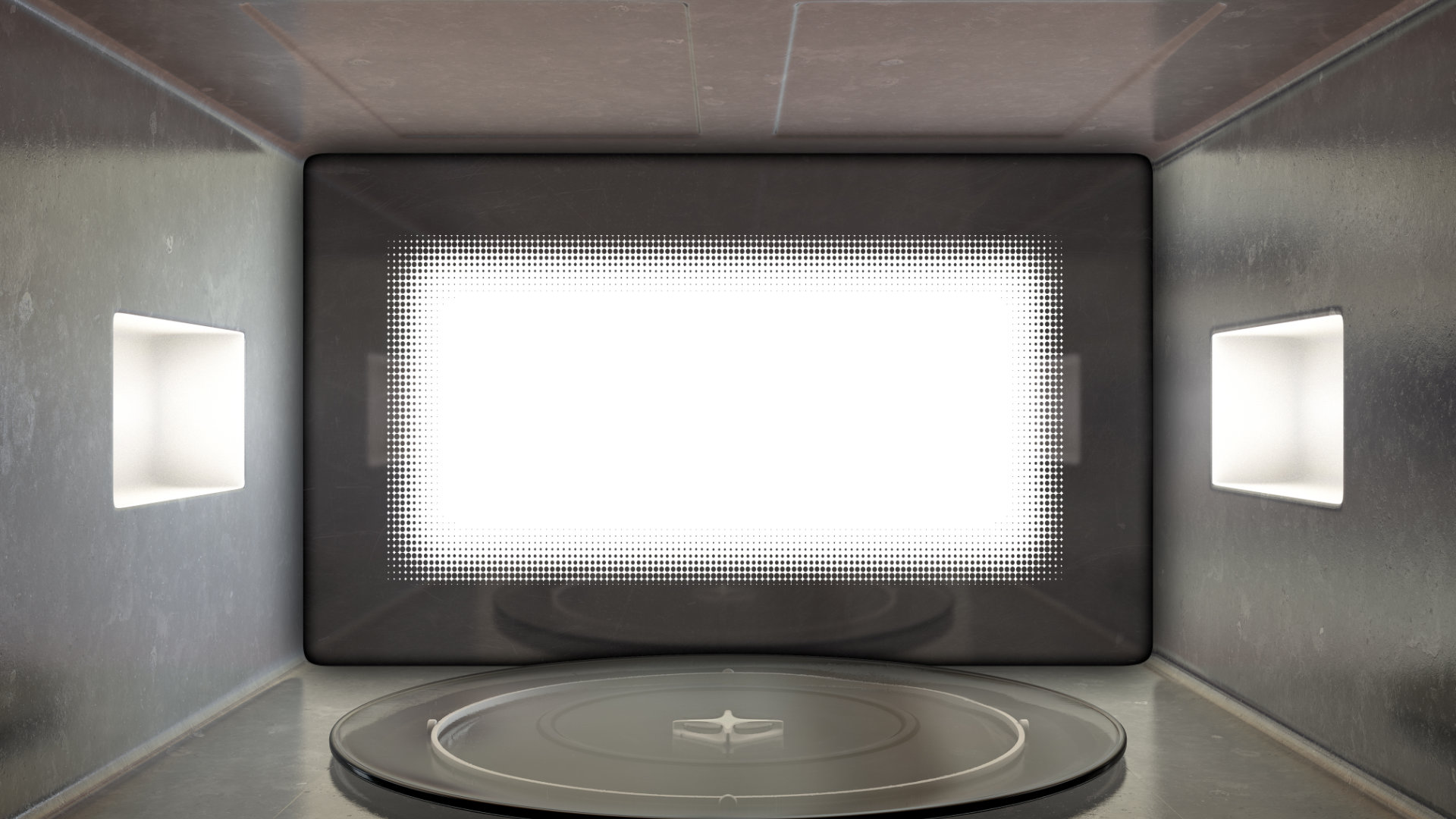
Is your microwave repeatedly tripping the circuit breaker in your home? This can be incredibly frustrating, particularly after a long day when you just want to reheat some leftovers for an easy dinner! There are a few different things that may cause your microwave to trip the circuit breaker, and some of them are relatively easy to fix. Read on to find out what to do!
Overloaded Circuit
An overloaded circuit can happen when a circuit has more electricity flowing through it than it can safely handle. This leads to the circuit breaker tripping to avoid blowing a fuse. The most common cause of this is having too many appliances running on the same circuit, but it can also be caused by a single device that uses too much power for the circuit to handle.
To check if this is the issue with your microwave, have a look at how many appliances are plugged into the power outlet. Ideally, your microwave should be the only appliance plugged into the outlet, as microwaves tend to be high-use appliances. In some cases, multiple outlets may be on the same circuit.
- Identify which outlets correspond to the circuit that the microwave is on. You can test this when the microwave trips the circuit breaker by checking whether any other outlets are not working.
- Identify if any of the appliances on the circuit are high-consuming appliances. These tend to be appliances that use heat.
- Move any high-consuming appliances to different power circuits.
- If this isn’t possible, make sure that when you’re using the microwave, all the other appliances are turned off.
- If you’re having a continuous issue, consider getting a qualified electrician to upgrade your circuit or put in a dedicated circuit just for the microwave.
Faulty Wiring
If the wiring in your house is faulty, it can lead to circuit breakers tripping even when they’re using a normal amount of electricity. Faulty wiring can mean damaged or deteriorated wiring, loose connections, or corroded screws. If your microwave is constantly tripping the circuit breaker—even when it seems to be functioning normally otherwise—and if you’ve determined the outlet isn’t overloaded, the wiring could be at fault.
- Take a close look at the outlet. If there is a fault, the outlet may look scorched or discolored, and there may be a burning smell.
- Check if the circuit breaker immediately trips again after being reset. This could mean a short on the circuit.
- Try a different appliance. If it trips again, it’s likely an issue with the circuit, not the microwave itself.
- In a lot of jurisdictions, you need to have a permit or be a qualified electrician to complete electrical work, so it’s recommended that you talk to a professional about getting your circuit fixed.
Microwave Malfunction
If the microwave itself is malfunctioning, this can cause it to draw too much power and trip the circuit breaker. This means that something within the microwave is faulty, causing an overload or short on the circuit.
This issue is more prevalent with older microwaves, as they tend to draw more power when internal components start to wear out. So if your microwave is getting on in years, it could be the cause of the tripping.
To diagnose this:
- Firstly, test your microwave in a different outlet, ensuring it is not on the same circuit as the initial outlet. If it trips that circuit, it’s likely that the microwave is the culprit.
- Next, test a different appliance in the microwave’s initial circuit, to ensure that the circuit is functioning correctly. If it works as expected, you’ve determined that only the microwave is at fault, not the outlet.
Once you’ve determined the microwave is at fault, you have two options—you can call in a professional technician, or you can get a new microwave. As this fault is more likely to happen in an older microwave anyway, in nearly all cases it will be more cost-effective to purchase a new one, especially as microwaves are relatively cheap compared to other appliances.
Note that the average lifespan for a microwave is 7-8 years, so if yours is older than this it might be time to bite the bullet and buy a new one!
Ground Fault
A ground fault happens when the current flowing within an appliance (in this case, a microwave) goes off course and makes contact with the grounded part of the appliance. This can be very dangerous and lead to the risk of an electric shock if you touch the device. Your home’s electrical system will contain a Ground Fault Circuit Interrupter (GFCI) and trip the circuit as soon as it detects this.
If your microwave has a ground fault, you might find that it behaves erratically, sometimes working and sometimes not. You may find that it sometimes won’t turn on at all.
To fix this issue:
- Plug the microwave into another outlet to see if the same thing happens. If it does, a ground fault could be the culprit.
- One source of grounding can be a damaged power cord. Check your power cord for any wear and tear or exposed wires. If you notice any, immediately unplug the microwave from the power.
- If the power cord is damaged, purchase a replacement cord and install it before trying the microwave again. If the cord was the issue, your microwave will now work properly without tripping the circuit breaker.
- If you’ve had recent spills or leaks around your microwave, the moisture could be causing the ground fault. Unplug the microwave, place it somewhere warm and dry, and leave it there for a few days until you’re certain it is totally dry, then see if the fault is fixed.
- If the fault is still happening, your microwave likely has damaged internal components. As stated above, you have the choice of either calling in a technician to help you diagnose the issue, or replacing the microwave. Use the age of your microwave to help you decide—remember, if it’s seven years old or more, it’s best to just replace it.
Leave a Reply Cancel Reply
You must be logged in to post a comment.

The 10 Best Dishwasher Brands in 2024
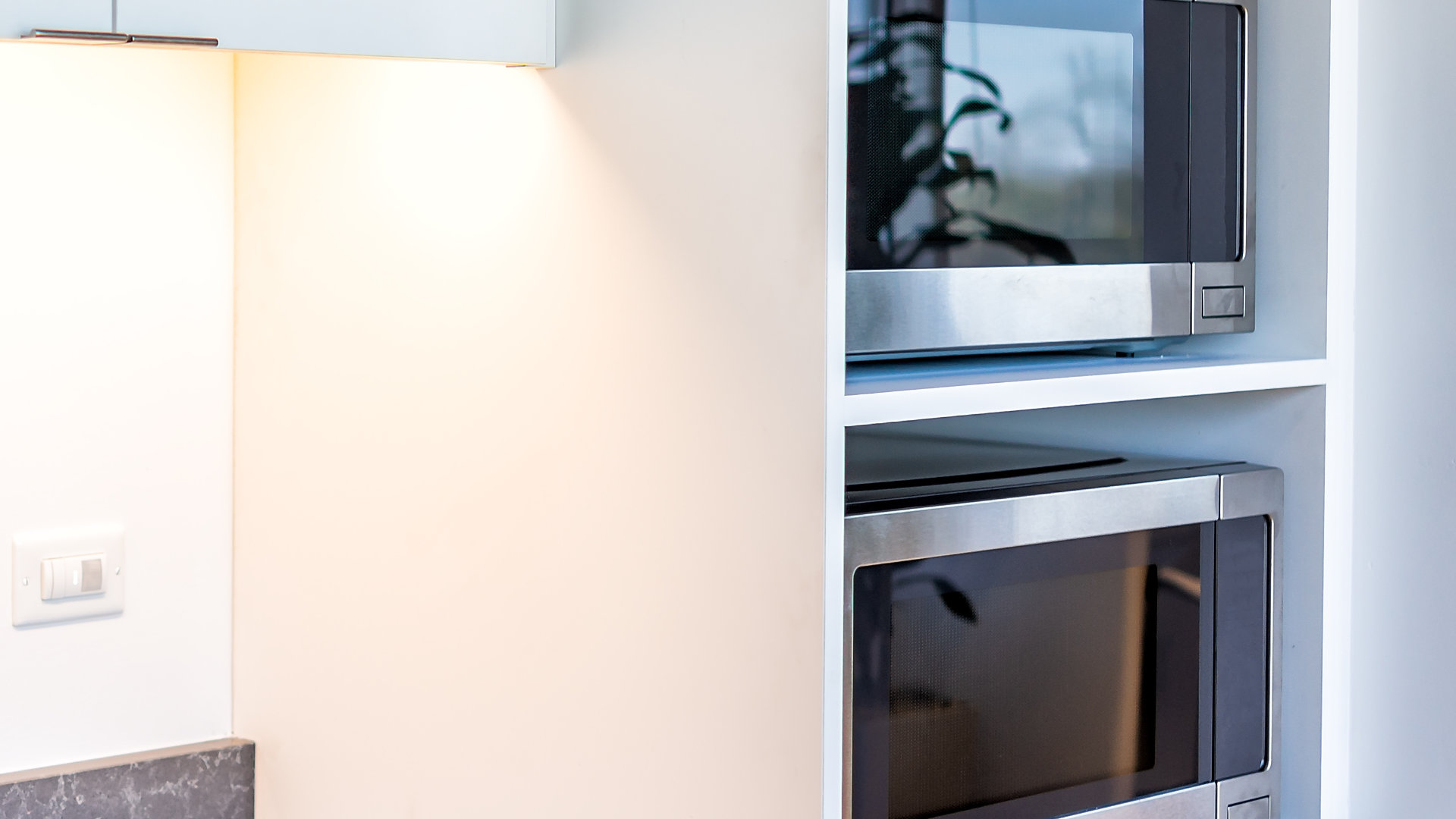
How to Replace Microwave Light (in 5 Steps)
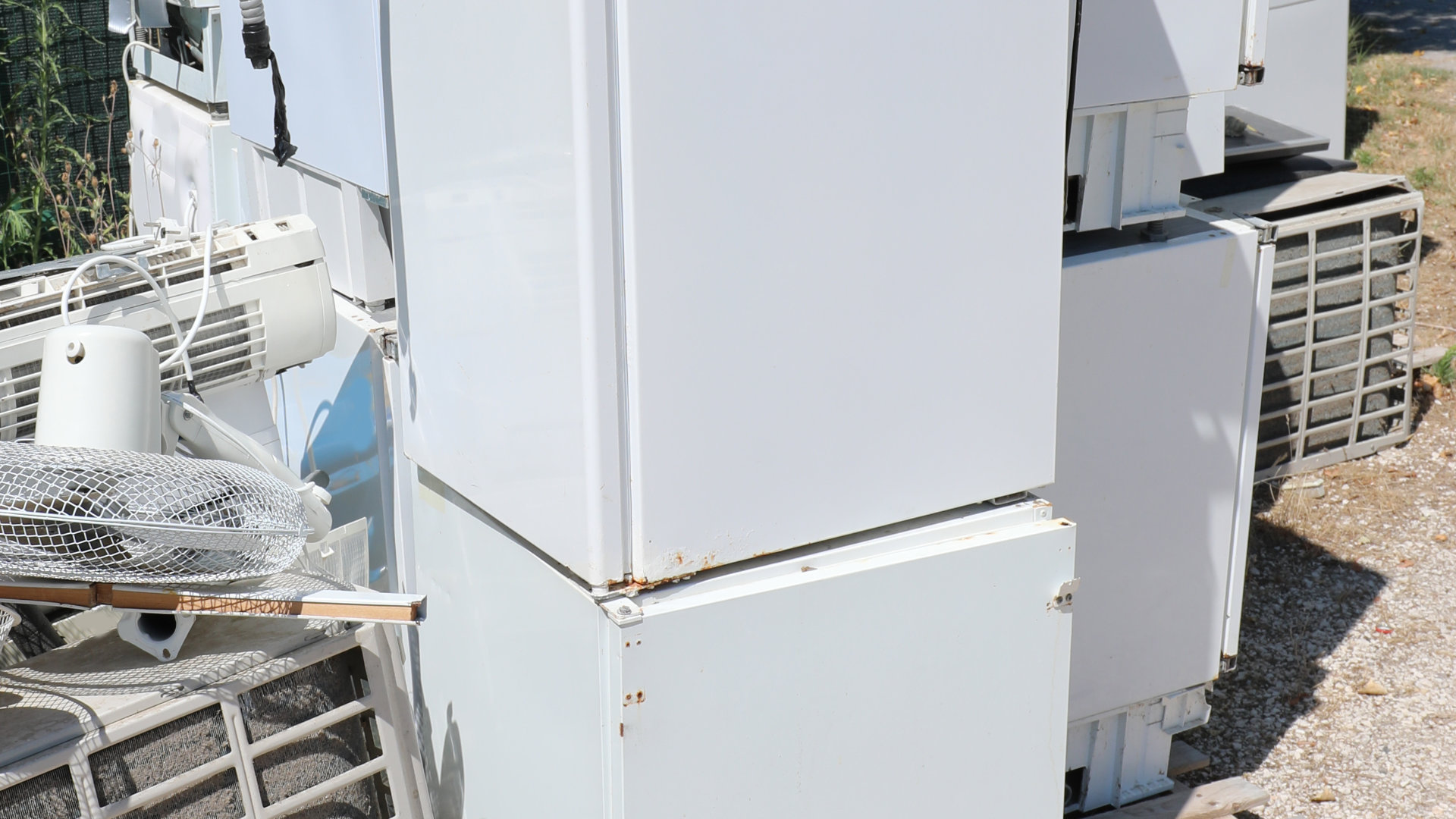
How To Dispose of a Refrigerator (in 5 Steps)

5 Reasons Your Freezer Is Leaking Water

How to Reset a Whirlpool Refrigerator Ice Maker

6 Reasons Your LG Refrigerator Is Not Making Ice

Kenmore Fridge Ice Maker Not Working? 5 Ways to Fix It


How to Remove Fish Smell from Your Refrigerator

How To Fix Bosch Dishwasher E24 Error

Troubleshooting a Whirlpool Dishwasher Not Draining

Why Is Your Fridge Water Not Working, but Ice Is?

How to Fix the E15 Bosch Dishwasher Error Code

How Much Power Does a Microwave Use?

How to Properly Clean Refrigerator Coils

How to Fix an LG Washer Showing OE Error Code
- Text 937-252-3200
- Schedule Service
- Call 937-252-3200
- Call (937) 252-3200
- Appliance Sales
- Customer Reviews
- Meet Our Team
- Track Your Technician
- Check Your Job Status
- Leave a Review
- News and Tips
- (317) 834-1922

Why Does My Microwave Keep Tripping the Circuit Breaker?

Common electrical questions answered by a local Indianapolis electrician.
It’s the end of a long day. You’re exhausted. Your kids are exhausted. And of course, everyone’s hungry. Luckily, you remember those leftovers in the fridge from yesterday. You just need to put them in the microwave for a few minutes. Annnd… the microwave trips the ciruit breaker.
One question we hear a lot is, “Why is my microwave tripping the circuit breaker?” The answer: The circuit is becoming overloaded.
Microwaves are a common culprit for overloaded electrical circuits , which can be both frustrating and concerning for homeowners. Simply put, the microwave puts out more amps to operate than the electrical circuit is designed to handle. Electrical circuits are rated to handle certain amounts of amps, and the microwave is exceeding that amount, causing the circuit breaker to trip.
Tripped circuit breakers are common in households, but when it keeps happening, it’s time to get to the root of the problem and find a solution. So, what is causing the microwave to overload the electrical circuit?
There are two possible causes of why the microwave keeps tripping the circuit breaker:
- The microwave is not functioning properly and is pulling too much electrical current.
- Too many electrical appliances are plugged into the same circuit.
Cause #1: The microwave is malfunctioning.
First, test to see if the problem is related to the way the microwave is functioning. Plug the microwave into an area where the breaker is set for a higher amp rating (like a garage), then turn on the microwave and see what happens.
If the circuit breaker in that area trips, it’s a sign that something is wrong with the microwave. You should either have the microwave fixed, or replace it.
If the breaker does not trip, it means the microwave is fine, but it needs its own dedicated circuit.
Cause #2: Too many appliances are plugged into the same circuit.
Because most microwaves pull about 12 amps, they need their own dedicated circuit. This means they shouldn’t share a circuit with any other appliances, or they’ll quickly overload the circuit and trip the breaker.
To check to see if your microwave is on a dedicated circuit, look at the label on the tripped breaker. If it says “microwave,” it’s probably on a dedicated circuit. If not, it’s likely that the microwave is sharing a circuit with other appliances and the circuit is becoming overloaded.
Need dedicated circuit installation? Call Grounded Solutions today!
As always, leave the electrical work to the pros. Whether you’re sure you need dedicated circuit installation, or you just need help diagnosing an electrical problem, the local electricians at Grounded Solutions are happy to help!
You Might Also Be Interested In…
Ask an electrician: how to reset a tripped circuit breaker.

- 450 E Mahalasville Dr Martinsville, IN 46151
Need excavation, drainage or concrete work?

- Privacy Policy
- Terms of Use

Dave Burroughs
Love Made in USA Product!
(Why & Solving) Microwave Keeps Tripping Breaker
Published: January 12, 2023

Wondering why microwave keeps tripping breaker? Microwaves are an essential appliance in most households, but when they start tripping the breaker, it can be a frustrating and confusing experience. A tripping breaker can signify a variety of issues, ranging from a simple overheating problem to a more serious electrical malfunction.
In this article, we will discuss the common causes of why a microwave keeps tripping a breaker on your kitchen , and what you can do to fix the problem. Whether you’re a homeowner or a renter, understanding the causes and solutions for this issue will help you keep your microwave running smoothly.
Table of Contents
Why is my microwave suddenly tripping the breaker?

When a microwave suddenly starts tripping the breaker, it is usually the result of an electrical issue. There can be several reasons why a microwave may suddenly start tripping the breaker, including:
1. Overheating
Overheating is one of the most common reasons why a microwave may keep tripping a breaker. When a microwave overheats, it can cause the internal temperature to rise, which can lead to the tripping of the breaker.
The causes of overheating can be due to several factors, including Blocked vents by debris or food, faulty cooling fan , dirty filters, overloaded or old age.
2. Short Circuit
A short circuit in the microwave’s electrical wiring can cause the breaker to trip. This can happen if the wiring is damaged or frayed, or if there is a problem with the microwave’s internal components.
Some causes of short circuit in microwaves include damaged wiring or frayed, moisture inside the microwave, faulty components, or Improper installation.
3. Power surge
A power surge is a sudden increase in electrical voltage that can cause damage to appliances and electrical systems. Power surges can be caused by lightning strikes, power outages, or other external factors. If a power surge occurs while the microwave is in use, it can cause the breaker to trip as a safety measure to protect the appliance and the electrical system.
4. Circuit overload
A circuit overload is another common reason why a microwave may keep tripping a breaker. A circuit overload occurs when the electrical circuit is being asked to handle more electrical current than it is designed to handle, causing the breaker to trip as a safety measure to prevent damage to the electrical system.
Some causes of circuit overload in microwaves include overloaded circuit with other appliances like no space for fridge in kitchen or lights, incorrectly sized breaker, or old wiring in your house.
5. Faulty breaker
A breaker is a safety device that is designed to protect the electrical circuit and appliances from damage caused by a power overload or short circuit. When a breaker becomes faulty, it may not be able to handle the electrical load of the microwave, causing the breaker to trip.
Should I be worried if my breaker keeps tripping?
If your breaker keeps tripping, it’s important to take it seriously as it can indicate a potential problem in your electrical system. A breaker is a safety device that is designed to protect the electrical circuit and appliances from damage caused by a power overload or short circuit.
A breaker that keeps tripping may indicate that there is an issue with the electrical system that needs to be addressed. It’s important to have it checked by a professional electrician to determine the cause of the problem and make the necessary repairs. It’s also important to not ignore the issue and assume it will go away by itself, as it can cause damage to your appliances and even be a fire hazard.
How do you fix a microwave keeps tripping breaker?

If your microwave keeps tripping the breaker, it can be frustrating and inconvenient. However, there are a few things you can try to fix the issue yourself before calling in a professional.
Some potential causes of a microwave tripping a breaker include damage to the power cord or plug, a malfunctioning outlet, debris in the air vents, a failing diode or magnetron, or a malfunctioning door switch. By troubleshooting and trying some of the solutions I mentioned before, you may be able to fix the problem and get your microwave working again.
Total Time: 1 day
Step 1: Check the Outlet
Check to make sure that your microwave is plugged into its own dedicated outlet on its own circuit, as multiple appliances drawing current on one circuit can overload it and cause the breaker to trip. Check for any damage to the power cord or plug. If there is any damage, the cord will need to be replaced.
Step 2: Inspect the Wiring
Inspect any visible wiring for damage or loose connections that can cause arcing or sparks when current passes through them. If any are found they should be replaced or reconnected as needed by a qualified electrician.
Step 3: Clean the microwave’s air vents
Debris can build up in the vents and cause the microwave to overheat, tripping the breaker. Clean the air vents using brush or wet wipe to flush the dust.
Step 4: Check Components
Check all components and power cords for signs of defects such as fraying wires, shorting out in exposed areas, heat generated from poor insulation, and other indications of danger related to defective cords and plugs which should be replaced as soon as possible with approved parts from a trusted manufacturer before use resumes in order to avoid further risk of injury/overheating/fire etc.
Step 5: Contact Expert
If you suspect a problem with deeper inside components such as resistors or capacitors that go beyond assessment without access tools then highly recommend having an expert technician. If none of these steps resolve the issue, it is recommended to call a professional repair service.
Estimated Cost: 100 USD
- New breaker
- Safety Gloves
- Electrical tester Pen
- Screwdriver
Materials: Replacement wire Replacement circuit/parts
Why and how to fix microwave keeps tripping breaker after 30 seconds
If your microwave trips the breaker after 30 seconds, it could be due to several reasons. Some of the most common causes include:
- Overheating: If the microwave is overheating, it can cause the breaker to trip. This can happen if there is debris blocking the air vents, or if the internal cooling fan is not working properly.
- Faulty door switch: The door switch ensures that the microwave only operates when the door is closed. If the door switch is malfunctioning, it can cause the microwave to trip the breaker.
- Short Circuit: A short circuit in the microwave can cause the breaker to trip. This could be due to damaged wiring or a malfunctioning component such as the diode or magnetron.
- Power Surge: A power surge can cause the breaker to trip, especially if the microwave is old or damaged.
To fix this issue, you can try the following:
- Clean the air vents with a small brush and a vacuum cleaner to remove debris.
- Check the door switch and make sure it is working properly.
- If you suspect a short circuit, you should call a professional repair service.
- If the microwave is old and you suspect a power surge, consider replacing the microwave.
It’s important to note that if you’re not comfortable with electrical repairs, it’s best to call a professional repair service to fix the issue.
Why and how to fix microwave trips breaker after 2 minutes
If your microwave trips the breaker after 2 minutes, it could be due to several reasons. Some of the most common causes include:
- High Power Draw: The microwave may be drawing too much power, causing the breaker to trip. This can happen if the microwave is too old, or if it is malfunctioning.
- Faulty Magnetron: The magnetron is the component in the microwave that generates the microwaves. If it is malfunctioning, it can cause the breaker to trip.
- Overheating: The microwave may be overheating, causing the breaker to trip. This can happen if there is debris blocking the air vents, or if the internal cooling fan is not working properly.
- Check the power cord and plug for any damage. If there is any damage, the cord will need to be replaced.
- Check the magnetron and make sure it is working properly.
- If you suspect a power surge, consider replacing the microwave.
Why and how to fix microwave keeps tripping breaker when door opens

If your microwave trips the breaker when the door is opened, it could be due to a faulty door switch. The door switch ensures that the microwave only operates when the door is closed. If the door switch is malfunctioning, it can cause the breaker to trip.
- Locate the door switch on your microwave. It’s usually located near the door hinge or on the door frame.
- Test the door switch with a multimeter to see if it’s working properly.
- If the door switch is malfunctioning, it will need to be replaced.
Also, it’s worth mentioning that if the door of the microwave is not properly closed, it can also cause the breaker to trip, make sure the door is properly closed and the latch or the lock is working properly.
What size breaker do I need for a microwave?

When it comes to knowing what size breaker you need for a microwave, first check the wattage of your microwave. If the wattage is less than 1000 watts, then you need a 15-amp circuit breaker. However, if your microwave wattage is greater than 1000 watts, then a 20-amp circuit breaker is required. Always make sure that the circuit you select meets local codes and has enough room for additional appliances in the future.
In general, microwaves have their own dedicated outlet that’s connected to a separate appliance specific circuit in your electrical system. To ensure proper functioning of your microwave, the power requirements must be sufficient to support its use and prevent from tripping the breakers in your home’s electrical panel. Therefore, never plug your microwave into an extension cord to power it or plug multiple devices into one outlet at once because this can easily cause overloads which lead to overloads on circuits and fire hazards.
Is it worth it to fix a microwave?
When it comes to deciding whether it is worth fixing a microwave that keeps tripping the breaker, there are a few factors to consider. Is it still under warranty? If so, then the cost of repair may be covered by the manufacturer. If not, it’s important to assess the age and condition of the appliance and balance this against the potential cost of repair versus replacement.
If your microwave is more than 5-7 years old then you may need to begin weighing up whether repairing this appliance will be worth your while in terms of expense and potential future reliability. Keep in mind that modern microwaves come with a variety of features such as quick cooking times, temperature control, crisping trays and compatibility with apps from our phones or tablets. If these features are important for your lifestyle then you may want to opt for a newer model.
Alternatively, if your unit is relatively young (2-3 years old) or has been well maintained over its lifetime then it might be worth checking out any available troubleshooting information online or scheduling for a qualified technician to take a look at it and provide an honest assessment. An experienced technician can usually diagnose any mechanical problems quickly and offer reliable advice on whether repair is indeed feasible.
How long should a microwave last?
On average, a microwave should typically last around 10 years, though this may vary depending on the type, brand and model you have. It is important to ensure that your appliance is regularly serviced and regularly maintained in order to get the most life out of it. Taking care of your appliance may involve cleaning the interior, wiping down the exterior and ensuring the power cord is not frayed or worn.
Can an old microwave cause the breaker to trip?
It is possible that an old microwave can cause a breaker to trip. In general, once a microwave reaches a certain age, its internal components may start to deteriorate, causing the associated circuit breakers to trip.
In order to determine with certainty whether your microwave is causing the breaker to trip, it may be necessary to consult with an experienced electrician who can diagnose and troubleshoot electrical problems.

"LIVE, LOVE, LOCAL" Support local American Brand and Make Impact!
Leave a Comment Cancel reply
Save my name, email, and website in this browser for the next time I comment.

- Expert Tips
How to Fix Your Microwave Tripping a Circuit Breaker
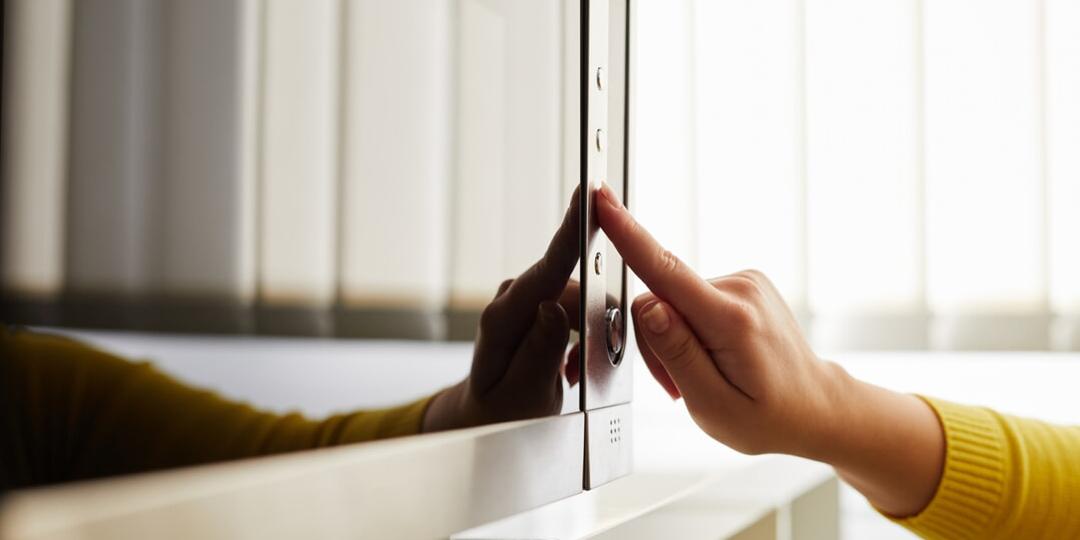
October 5, 2023
Microwaves have become an essential appliance in modern kitchens, making our lives more convenient. However, it can be frustrating when your microwave trips a circuit breaker, disrupting your meal preparation or heating plans. When faced with such a situation, you’ll want to address the issue promptly and safely. In this blog post, we will explore common reasons why microwaves trip circuit breakers and provide helpful tips to fix the problem, all with the trusted expertise of Mister Sparky.
Overloading the Circuit
One of the most common causes of a microwave tripping a circuit breaker is overloading the circuit. Microwaves draw a significant amount of power when operating, and if the circuit is already handling a heavy load, it may not be able to handle the additional demand. To fix this issue, unplug any other high-powered appliances from the same circuit and try running the microwave again. If it no longer trips the breaker, consider moving the microwave to a dedicated circuit.
Faulty Power Outlet
Another culprit for microwave circuit breaker trips is a faulty power outlet. Over time, electrical outlets can become worn, loose, or damaged, leading to intermittent power supply and tripping issues. To address this, turn off the circuit breaker and safely inspect the outlet for any visible signs of damage. If you notice any damage, it is best to seek assistance from a professional electrician to replace the outlet and ensure proper wiring connections.
Microwave's Internal Issue
In some cases, the root cause of the problem lies within the microwave itself. Components like the magnetron (the device that produces microwaves) or the high voltage capacitor might be malfunctioning, causing a spike in power consumption, and tripping the circuit breaker. In such cases, it is best to avoid attempting repairs yourself and instead contact Mister Sparky's professional appliance repair services. They have the expertise to diagnose and fix internal microwave issues safely.
Power Surges
External factors like lightning strikes or power surges from the electrical grid can cause microwave-related circuit breaker trips. Installing surge protectors on your electrical outlets can help safeguard your appliances, including the microwave, from sudden voltage spikes.
Circuit Overload Protection
Many modern homes are equipped with advanced circuit breaker panels that have built-in circuit overload protection. If your microwave trips a breaker regularly, it could be due to a sensitive circuit breaker or a short-duration power surge. While these breakers are designed to protect your electrical system from damage, frequent tripping might indicate an underlying problem. To avoid damaging your microwave or electrical system, consult a Mister Sparky electrician to determine if a breaker replacement or an upgrade is necessary.
Denver’s Circuit Breaker Experts
Dealing with a microwave that keeps tripping a circuit breaker can be frustrating, but it's essential to address the issue promptly and safely. In this blog post, we've explored some common reasons why microwaves trip circuit breakers and provided useful tips to fix the problem. Remember, when dealing with electrical issues, it's always best to seek professional help. At Mister Sparky of Denver, our certified electricians are well-equipped to handle any electrical problems, ensuring the safety and functionality of your homes electrical system.

Common Reasons Your Microwave Trips the Breaker
- February 1, 2024
- By Prasanna K
Nowadays people are so fond of microwaves and why not? It makes the complete process so easy and tasty that everyone loves it. But there can be a weak point of this amazingly smart tool i.e. it might trip your home circuit breaker. Well if you are one of those, this article is for you.
Why is My Microwave Tripping the Breaker?
Isn’t it frustrating when your favorite device keeps tripping the home circuit breaker? we’ll definitely, Yes. But it is completely the fault of the device there can be many reasons behind it. Many people think the device has been damaged or is working properly due to which they are facing the problem. To be honest this can be one of the reasons but not the only reason. In today’s article, we will be learning about some of the major possibilities that can trip your home circuit breaker and how we can fix it.
What are the Reasons Why the Microwave is Tripping Your Breaker?
If your microwave is frequently tripping the breaker and you keep repairing it but still the issue is not resolved then the problem is not just with the microwave . There can be many other reasons, like an overloaded circuit breaker, faulty capacitor, or using too many appliances at the same time. So without wasting any more time let’s learn about all these issues in detail.
1. Overloaded Circuit Breaker
Every circuit has a predetermined value of its maximum electricity flow capacity. If the breaker is tripping more frequently, then there might be more electricity flow than the circuit can handle. It usually happens when an individual is using too many appliances at the same time. But it cannot be the only reason, because nowadays there are many devices in the market that consume a lot of electricity while working. So there can be just one device or more that affects the current flow of the circuit.
2. Defective Microwave
Microwaves can malfunction in such cases, the reason being. If the microwave is defective then it will consume more electricity to work because of which the circuit will get overloaded. As discussed in the above segment if the circuits get overloaded with the current flow then it causes the tripping of the breaker.
3. Electrical Supply Problem
Electrical supply is the most common yet less noticeable problem in most situations. Many people don’t think about it, as they start assuming there can be an issue with the device or wiring but not with the electricity supply. Well, that’s not true. Users can face tripping off their breakers due to electricity supply. The supply issue usually occurs due to voltage fluctuations, frequency variations, or intermittent power supply. that disturbs the proper current flow. Because of this, the breaker gets tripped.
4. Faulty Capacitor
The capacitor is a device that is used to store electricity and release it when there is a requirement. Generally, the faulty capacitor is not a direct reason for breaker tripping. As this device itself is made to regularize the current flow in the circuit which reduces the risk of tripping a breaker. But there are chances the capacitor might function strangely due to the inrush of the current which might even cause its short circuit.
5. Malfunctioning Door Safety Latch
Door safety latches are the least expected issue that might cause the tripping of the breaker. The door safety latches are mechanical components that have no direct connection with the breaker or current flow, but they work along with the microwave interlock switches. That is why if the door safety latch is not working properly it will lead to the malfunctioning of the microwave. The device might not start or will stop in the middle of the process and this can lead to tripping of your breaker.
6. Turntable Motor Problem
Just like a malfunctioning door safety latch a Turntable motor cannot be the direct cause of breaker tripping. But yes, if the Turntable motor starts functioning strangely it might cause the microwave to malfunction which might disturb the current flow and it will cause the breaker to trip. The Turntable motor problem can occur due to a short circuit in the motor wiring or if the motor gets overloaded.
7. Issues With the High-Voltage Section
A high-voltage section in any electrical appliance is one of the parts of the device that deals with the generation and management of high-voltage to complete specific tasks. In the microwave case, the key elements of the high-voltage section can be a magnetron, a high-voltage capacitor/ transformer, or a high-voltage diode. These elements are generally used to generate radiation in the microwave so that it can be used for cooking. If any of these components has a problem in working it will directly lead to a malfunctioning of the microwave and then it will cause the trip of the breaker.
8. Using too Many Appliances Simultaneously, in the Same Circuit
Every circuit has a predetermined value of maximum capacity it can hold in terms of current flow. Generally, home appliances do not consume much energy which is good for general circuits. But if a user adds too many appliances in the same circuit it might lead to a short circuit or tripping of the breaker. The reason is, that adding too many appliances will increase the demand for current flow, because of which the circuit might get overloaded.
9. Aging of Wires and Outlets
Every electrical component requires maintenance on a regular basis. As these components are in continuous working from the time of their installation. Because of this, there is a gradual deterioration in the components like wires and outlets. This can lead to an unstable current flow in the circuit. The malfunctioning of the wire and outlets can damage appliances permanently and can also lead to a short circuit or trip of the breaker.
10. Diode Issues
A Diode is a very crucial component in any electrical system. The basic working principle of the diode is to convert the alternating current coming from the transformer into a direct current which will be used for the magnetron. If any disturbance occurs in the working of the diode it will directly lead to the malfunctioning of the magnetron and this will cause problems for the microwave.
How to Fix the Microwave Tripping Circuit Breaker?
1. check the circuit breaker.
Checking the circuit breaker is an important task to avoid frequent tripping of the breaker. Firstly you just need to Locate the Circuit breaker and check if there is any already tripped breaker. If you see any of them in the off position turn them On. You can also reset the breaker by moving it from the On position to Off and then moving back to the On position again. If the breaker again falls to the off position and you feel it slightly loose, then it’s an indication that the breaker is tripped.
Note: Make sure you unplug all the appliances before proceeding further and also prioritize your safety first if you are unsure of any of this you can always seek help from professionals
2. Make Sure the Microwave isn’t the Fault
Finding the cause of breaker tripping is a really tough job, there can be many possibilities that might lead to it. But a user can always start with the microwave itself. Make sure the microwave is working fine and it has no faults in it. A user can identify the microwave fault by its malfunctioning like not generating enough heat or turning off automatically in the middle of a task. These are some of the issues a user might face if there is a fault in the microwave. And if you experience any of such it is better to contact professional support to avoid any future problems.
3. Inspect the Door Safety Latch
The door safety latch may be just a mechanical component but has crucial working in the microwave system of the microwave. As they are aligned directly with the internal switch-locking system of the microwave. The malfunctioning of the door safety latch may lead to improper closing of the microwave door. So before proceeding any further make sure you check the microwave door is closing properly.
4. Inspect the Turntable Motor
The turntable motor is a very important component in any microwave. A turntable motor is used to rotate the tray present in the middle of the cooking compartment.
Malfunctioning of the turntable motor can also lead to tripping of the breaker. It is better to check if the motor is working properly. Below is the step-by-step guide to inspect the turntable motor.
Step 1: Unplug the microwave
Step 2: Check if direct access is possible to the motor if not then remove the other supporting components.
Step 3: Check if there is any physical damage to the component.
Step 4: Check if the rotation of the motor is smooth and has no disturbance by manually rotating the motor.
Step 5: Check if the shaft that connects the motor to the tray is clean and has no problem functioning.
Note: One can identify the problem in the shaft if it creates a noise while functioning.
If everything seems fine you can connect all the components back in the proper manner and can seek a professional’s help for any further processing.
5. Inspect the Capacitor
Before inspecting any electrical component make sure the device is unplugged or disconnected from the power source. Once done then have a quick visual inspection and check for any physical damage or crack present there on the body of the device. If the capacitor is faulty you might sense a burnt smell from the device. It is always advised to seek professional help for the inspection of electrical appliances.
Microwave Trips Breaker – FAQs
Ans: Yes, as the outlets are the main source to supply the current from the power source to the appliance and any disturbance in this flow can lead to the tripping of the breaker or can also damage the appliances,
Ans: Yes, using a microwave simultaneously with other high-powered appliances will consume more power from the power source and this will create an unusual load on the capacitor, Due to which the breaker might trip.
Ans: Yes, any faulty component in the microwave or any other electrical appliance will disturb the functioning of the devices due to which the current flow might get unstable which can cause the tripping of the breaker
Ans: Any external humid change or temperature variation will affect the working of the microwave and disturb the current flow in the circuit due to which the breaker might get tripped.
Microwave is a very important device in any regular household, it has changed the methods of cooking and reheating leftovers. But it can also be one of the major reasons to trip a circuit breaker due to its malfunction. Tripping of the breaker can happen for many reasons like an overload circuit or faulty components. One can always avoid such instances by having a regular inspection of their appliances, circuits, and outlets. If you identify or sense any unusual issue with an appliance or circuit make sure you seek help from the professionals and prioritize your safety first.
Related Posts:
- Shunt Trip Breaker
- Water Heater Tripping Breaker
- How To Fix "Air Conditioning Breaker Keeps Tripping" Issue?
- What Causes a Circuit Breaker To Trip
- RV Microwave Vs Home Microwave
- GFCI Circuit Breaker Wiring | Basics of GFCI Breaker
Leave a Reply Cancel reply
Your email address will not be published. Required fields are marked *
Get our Latest Newletters
Get great content that you love. No ads or spams, we promise.

Tutorials Symbols Courses Calculator Deals
Electrical Electronics Embedded Power Robotics ARM IOT
Mini projects Microcontroller Arduino Solar Free circuits Home Automation Seminar Topics Electronics Questions
Capacitors Resistors Filters Diodes Transistors Amplifiers IO Devices Thyristors DC Circuits Number System
Your Privacy is important to us
Tutorials Symbols Courses Calculator
- Affiliate Disclosure
- Terms and Conditions
- Privacy Policy
Copyright © 2024 Electronicshub.org

Galvin Power is reader-supported. When you buy via our links, we may earn a commission at no cost to you. Learn more
Why Does My GE Microwave Keep Tripping the Breaker?
Written by Edwin Jones / Fact checked by Andrew Wright
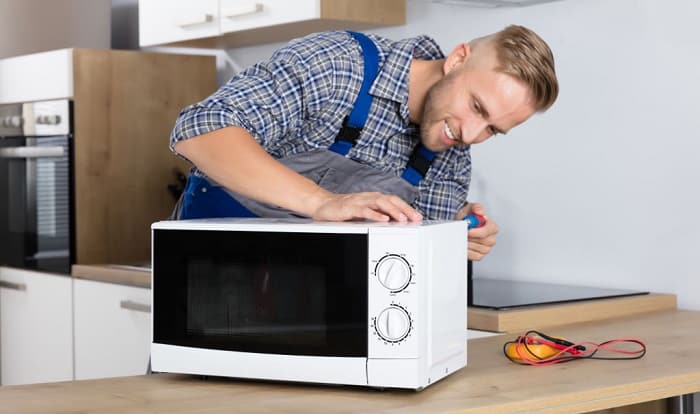
There’s no shortage of homeowners who wonder, “Why does my GE microwave keep tripping the breaker?” The most common answer to this is that it’s causing an electrical overload on the circuit. This applies to almost any kind of appliance that goes above the rated ampacity of the breaker.
Do take note that when a microwave keeps tripping the breaker, there could be other less common reasons behind it. It could be due to faulty switches and capacitors or even an electrical leak. Discover them all by reading on.
Table of Contents
Electrical Overloads Remain the Usual Culprit
1. faulty components and technical errors, 2. electrical leakages, 3. loose wiring, 4. the microwave itself is already broken..
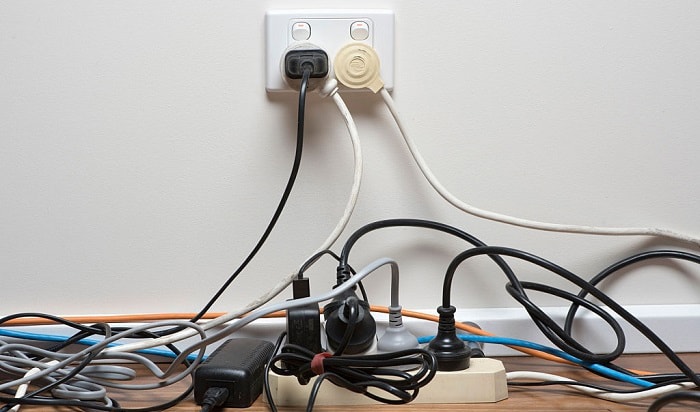
If your GE microwave trips the circuit breaker , it’s best to rule this problem out first. It could be as simple as having way too many appliances plugged in at a time. Your circuit breaker has a limited amperage, and once your load goes over that, the breaker trips to prevent further damage to the circuit and devices connected to it.
This is more likely if the microwave shares a circuit with other appliances. Electricians recommend dedicating an entire circuit for most appliances that require greater loads.
That being said, it’s a relatively simple problem for most. One solution to a microwave tripping the breaker frequently is to simply reduce the load by unplugging appliances that you don’t need, which share a circuit with the microwave before using it.
Other Possible Causes You Should Consider
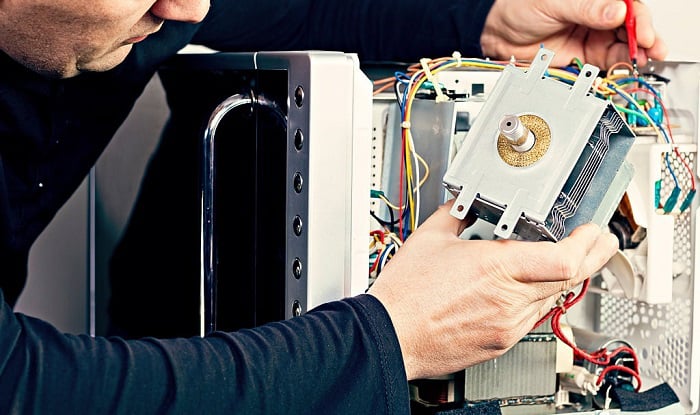
This is especially true if the GE microwave trips the breaker on startup. You may be dealing with faulty microswitches that cause errors, which in turn, cause the trip.
Usually, it happens like this. You set the temperature, then start it up. After a second or two of normal operation, it dies down because the breaker trips. This happens every time unless you get to the root of the problem.
The same goes for busted door switches or times when the timer becomes jammed. Check for damage on the microwave’s door safety latch’s switches. When the microwave trips the breaker when the door closes, it could be due to this issue.
For the timer, jams arise from damage to its components as well.
Other parts that may have gone out of commission, which may cause trips, include:
- Defective transformers
- Faulty capacitors
- Blown interference suppressors
At least two of these problems will cause the microwave to make a loud noise before tripping, so be on the lookout for that particular symptom.
Suppressors, in particular, may blow and cause a short circuit . Be extra mindful of them.
The electrical leakages can happen from a specific part, namely the magnetron. Once these leakages happen, the trips almost always follow suit.
You should be extra cautious if you think this is the issue. This kind of problem has a remarkably higher risk of electrocution. Have it properly diagnosed by a technician to ensure safety.
While a rare cause, it’s been pointed out before that loose wiring can also be a factor.
Loose wiring that makes contact with the chassis should be ruled out because it’s been found to be connected to microwave trips breaker problems before.
Sometimes, a malfunctioning microwave may cause trips. This has been reported before by people who encounter scenarios like when the GE microwave trips the breaker when its door opens . You may want to check if it’s due to a faulty door switch.
NOTE: Obviously, checking for damaged components will require you to take your microwave apart. If you’re unsure of your skills in handling electrical problems, I advise you to leave it to the professionals instead.
If you think it’s a minor problem that you can solve on your own, always take extra precautions by making sure the appliance is unplugged before taking it apart. Wear rubber-insulated gloves as well.
The following video provides more information about microwave tripping circuit problems and helpful tips on how to fix insignificant issues:
It may help you save a couple of bucks, assuming your issue belongs in the said category.
To sum it up, check for an overload problem first since it’s the easiest to fix. Otherwise, use the possible issues why does my ge microwave keep tripping the breaker we’ve listed above as a reference. Furthermore, please keep this pointer in mind: Unless you’re sure that you won’t break the microwave or put yourself at risk of electrocution once you try to fix it, it’s best to leave it to the pros. A couple of bucks for repair may be well worth it considering the alternative scenarios.
Other helpful tips you should read:
- Steps to Trip a Circuit Breaker Safely
- 4 Steps to prevent the circuit breaker from tripping

I am Andrew Wright. With 8 years of experience designing, installing, and maintaining electrical power systems. I love my job, and I have always wanted to offer others the necessary help so they can take care of their houses.
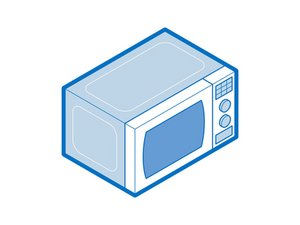
Microwave Oven
Repair guides and troubleshooting information for microwave ovens.
parag @diyaddict
Posted: Mar 6, 2020
- Unsubscribe
GE microwave: JVM3160RF4SS trips breaker during cook cycle
hello, today, all of a sudden our GE microwave, model, JVM3160RF4SS which we purchased in 2018 started tripping the circuit breaker. The circuit only trips when attempting to run a cook cycle. I am able to run the exhaust, all lights, open/close doors without any issues. While searching online for answers, i ran into several posts that mentioned checking the fuse. i have checked the fuse that is behind the plastic grill and it does not appear to be blown.
I am wondering if anyone has experienced this kind of failure before and have any suggestions on what could be the root cause.
Is this a good question?
Yes! So annoying! About 6 months ago it started tripping if we would open the door before the microwave beeped. It actually blew our circuit that the microwave is on and we had to replace two outlets. Now it happens the second we turn the microwave on. I think we’re just going to replace-I’m sick of dealing with it and don’t want to risk a fire. Terrible microwave for sure!
Apr 16, 2020 by Christine Riedel
We also purchase our microwave in 2018 (February to be exact)
@Christine Riedel ,
You should always pause or turn off the microwave using the microwave's control panel before opening the door, as a high current is flowing through the door interlock switches when the microwave is operating.
The door interlock switches are a safety feature designed to prevent the microwave from operating and emitting harmful radiation if a door is open and should not be used as a bypass for the correct way to operate the microwave .
You now know what results in doing it the wrong way
Apr 16, 2020 by jayeff
@jayeff Yes, of course. Now if you can teach my husband and kids, that would be great. Seems that there’s an issue with this microwave regardless though.
What is the make and model number of the microwave?
If it is tripping the breaker now as soon as is turned on there there most probably is faulty component or perhaps a wire that is touching the chassis that is causing this to happen.
You could try opening the microwave to inspect it for "flash" burn marks on the case or stressed components (burnt looking etc) to see if anything is obvious.
Be aware that microwaves are dangerous to work on even when unplugged as they can store >6000V in the HV capacitor for months unless it is discharged correctly before proceeding with any repairs. This amount of voltage can be lethal depending on your medical condition or it is still capable of giving a nasty shock.
Don't know about your husband but maybe advising the kids that they'll be paying for it if they damage it might slow them down a bit. Worked on me a long, long time ago. As a kid, it used to take me weeks to pay for things out of my pocket money/part time before school job for what I damaged. ;-)
Show 27 more comments

David McLean @davidmclea78842
Posted: Jan 27, 2021
I had this exact same problem on my GE microwave. There are two slots where the door latches closed onto the main microwave unit. The lower slot has a little button in there that is supposed to press in/closed when you close the door. If the button is gummed up with residue then the microwave will trip the circuit breaker. Unplug the microwave then clean that button with a Qtip and alcohol and press the button in and out a few times to free it up again. Plug the microwave back in and you should be good to go.
Was this answer helpful?
40 Comments:
I had this exact same problem. David's post worked like a charm; problem solved!
Thanks to all who shared the solution.
Feb 5, 2021 by Duane Henle
Davids answer worked like a charm. For me it took quite a bit of prodding but finally this button just popped out. Saved me much trouble as this microwave is built-in over the stove and it’s difficult to deal with to replace
Mar 20, 2021 by Evan
David's solution worked for me as well. Thanks for saving me a service call!
Mar 27, 2021 by gideonlamb
Worked for me!
Apr 3, 2021 by chris
I'm so glad I found this! It worked on my 2017 model. Thank you!
Apr 22, 2021 by Dave
Show 35 more comments

jayeff @jayeff
Rep: 456.8k
Hi @diyaddict ,
There is usually only one fuse in a microwave oven. If it was faulty, nothing would work.
A circuit breaker operating indicates that the current flowing through it has exceeded its’ rating.
Have you proved that the problem is only when using the microwave, you didn’t say?
Does the circuit breaker also trip when using another appliance with the same or greater power consumption as the microwave when plugged into the same wall outlet?
Check the information labels on the appliances to check the power consumption figures e.g. microwave might say 1200W input and an electric kettle might say 2000W so try the kettle. If the breaker also trips when using the kettle, perhaps the problem is the breaker or the breaker circuit and not the microwave
If this occurs only with the microwave and then when the microwave is cooking then there is a problem in the operating circuit of either the turntable motor, internal fan or the magnetron circuit as these components are in use when cooking and you have checked that all the other circuits that can be in operation without the microwave actually cooking don’t cause the problem to occur.
An example could be there is a low resistance connection between a wire carrying supply voltage in the microwave when it is cooking and the frame of the microwave which is earthed (wire rubbing on frame perhaps) and therefore this trips the breaker. This is a safety feature, preventing electrocution if someone touches the metal case of the oven.
In any event there are several possible causes and the microwave would have to be opened and tested as to the cause of the problem. In electrical circuits and electronic circuits is doesn’t have to be the same fault every time that can give the same symptoms
Working on microwave ovens is extremely dangerous if you don’t know what you’re doing . There is still potentially lethal voltage (>6000V) in the microwave circuit even when it has been disconnected from the power for some time. If you don’t know what you’re doing then don’t do it! It’s not worth it, leave it to the experts .
7 Comments:
Sorry i didnt realize u had provided feedback. The circuit breaker tripping was only happening when using microwave, and that to barely, it used to trip 1 second into the heat cycle.
Based on my research and having spoken to GE directly, it was pretty apparent that by the time i would have figured out which part was defective, i would have racked up the bill which would have been close to or over the cost of a new microwave, even if i was to do the troubleshoot myself. While talking to GE, i recall this one part (magnetron?) that is buried deep on the back of this microwave, and that part alone costed about $137. When i asked GE and other techs around my area, the cost of anyone to come out and investigate/repair was well over $300.
i have plugged the new microwave into the same power outlet where the old one was plugged in and so far there are no issues, so i guess its safe to assume that the problem was with the old microwave.
thanks for your feedback
Apr 21, 2020 by parag
I have the same problem. It is on a dedicated 15 amp circuit and it has made no difference. Is there a flaw in the GE microwaves? The previous GE, we had was great and lasted over 20 years! The model # is JVM3160DF4WW and the serial # LL268042A. The manufacture date is June 2018.
Oct 6, 2020 by David L Panzlau
The problem is actually one of the 3 microswitches for the latch mechanisism. Really, if you don't know the actual soulution, do not leave a comment.
Nov 17, 2020 by Brad Evans
@spaceguy85
Electrical faults displaying the same symptoms have to be tested to determine where it is and not just assumed that it is always the same cause. It would make it a lot easier if this was the case.
I've had faulty HV transformers in microwave ovens that blew fuses every time that the oven was started and this had nothing to do with the interlock switches.
Nov 17, 2020 by jayeff
sounds like we should start a class action law suit on GE due to the faulty magnetron part ....Had 2 now that went and they wont do anything ....
Jan 1, 2022 by RCR Auto
Show 2 more comments

Peter Chiamardas @peterchiamardas
Posted: Sep 28, 2021
Same problem with GE microwave mfg in 2018. When you try to start the microwave, breaker trips within a second.
Found the ‘door monitor' switch was bad. It's the middle microswitch (not top, not bottom) behind the main keyboard panel. Ordered from Amazon and replaced for less than $10. Bad switch had it's contacts fused together by electrical current. Watch YouTube videos to see how to replace it.
6 Comments:
Can you share the part you ordered.
Sep 28, 2021 by chris
There are 3 door switches. Top, Middle, and bottom. Which are NC (normally closed and NO (normally open).
May 15, 2022 by Ken Weiss
Door switch KW3A-16 was my bad switch (middle N/C), but I bought all 3. KW3A Microwave Oven Door Switch 16A 125V/250V Door Interloc (2 Normally Open and 1 Normally Close) https://a.co/d/cZBHOTD
Jun 29, 2022 by Steve B
I replaced all 3 switches and now as soon as I turn on the breaker, the microwave sounds like it is running. Help please!
Nov 20, 2023 by Irene
Updating. After I replaced the bad switches, the microwave ran successfully for a while, but then the breaker started tripping again. Switches were still good. By then my wife and I decided to just get a new oven. Still worth the effort and parts cost to delay the big expense, but for us, it was unavoidable in the end.
Nov 23, 2023 by Steve B
Show 1 more comment
bill @ruggb
Posted: Dec 17, 2021
I just fixed one. The door monitor switch is the prime suspect, BUT not the only thing. If that switch is not activated when the door is closed it puts a direct short across the AC line, which is what trips the breaker, but it does not blow the internal fuse. The problem can also be caused by worn out plastic assy. that holds the switches allowing the activator to drop too low and not trip the switch - as it was in the one I fixed. You need to verify that the switch is functioning or not, then look closely at the area the activator rides over. If it looks rough and worn, it is a $35+ part. The switch is also being scammed for the same or more, but can be had on AliExpress for about $5.
As Bill says, the plastic switch holder that the door latches engage should also be changed out as long as you have everything opened up. This is because the door latches cause significant wear on the plastic of the switch holder. The effect is that the top latch depresses the top primary switch deeper than it should and when opening the door that switch remains engaged (closed) by the latch a little too long. The middle switch doesn’t have this problem so it disengages from the lower latch first and it closes. With the upper and middle switches closed at the same time, even for an instant, you get a 120v short circuit and the breaker trips.
Even if your problem wasn’t when opening the door, this problem is just a matter of time before it occurs due to ongoing wear on the switch holder. I ordered our new switch holder part on Amazon as a Frigidaire 5304509457 - an exact match for my GE microwave. I replaced all 3 switches at the same time with parts from Amazon (Lonye switches).
Jan 17, 2022 by doug

Michael Melson @michaelmel64017
Posted: Dec 12, 2021
I have the same microwave, manufactured in 2018, tripping breaker, so I replace the door switch, it worked for a month, then I had to replace all 3 switches lasted another month. So done replacing microwave but not with a GE. Just tired of fixing it.
you probably need to replace the plastic piece that holds the switches unless the problem changed.
Jan 26, 2022 by bill

Steve B @steveb89387
Posted: Jun 29, 2022
Problem: GE Microwave model JVM3160RF2SS trips kitchen breaker as soon as the cook cycle begins. Problem repeats on other circuits in the house.
As other posts indicate, check the door switch.
https://youtu.be/eP7CTUQgRvg
Not very technical, but quick to the point.
I found the middle switch to be nonfunctional. It's the one "n/c". Marked kw3at-16
Searched kw3at-16 on Amazon and went with all 3:
KW3A Microwave Oven Door Switch 16A 125V/250V Door Interloc (2 Normally Open and 1 Normally Close) https://a.co/d/emlGtGc
Now, I wait a day for the parts...
4 Comments:
These Microwaves are JUNK and GE does not want anything to do with them out of warranty - should be and is in some places a class action law suit - faulty machines .........
Jun 29, 2022 by RCR Auto
Good luck. I ordered those switches several times over and would get by for a few months only...each time. Agree with RCR Auto. JUNK...so I moved on and will never go back to GE.
Jun 29, 2022 by BryceC
The switches wear out but also the plastic part that holds them. The plastic part wears out from the door latches rubbing against it, and this causes the switches to not be engaged properly and they cause a short. As long as you’re replacing the switches I’d strongly recommend replacing the plastic holder part at the same time. See comments above by Bill and myself.
Jun 29, 2023 by doug
Kyle @kyle57170
Posted: Sep 28, 2023
Had the same issue and it was the middle switch that needed to be replaced. However, I think the plastic piece securing the monitor switch broke as I was taking the faulty switch out. This prevented the new switch from sitting flush in the harness. I took some electrical tape and bumped it to plastic side of switch and it would sit flush. Is this a hazard? It was a 3 cm piece of electrical tape. Microwave working fine now.
3 Comments:
No hazard. Just not sure how long it may last. Could go the life of the unit. I put a dab of gorilla glue on mine and has been working fine. If you want to spring for about $40 I believe the whole plastic assembly that holds the switches is available.
Sep 29, 2023 by Dave
Thanks for the feedbackb
Oct 1, 2023 by Kyle
@irene46841
What is the make and model number of the microwave oven?
Nov 20, 2023 by jayeff
Add your answer
Past 24 Hours: 26
Past 7 Days: 114
Past 30 Days: 500
All Time: 45,187

- Search forums
- HEARTLAND RVs GENERAL AREA
- Electrical - For all Heartland brands
- 120 volt AC
Microwave tripping breaker after a minute or so of use .....
- Thread starter Midastouch
- Start date Nov 7, 2010
Well-known member
- Nov 7, 2010
Hey everyone! Haven't posted in along time ... I guess that means things have been great with my replacement GC after the "flood", for those that know what I'm referring to! Anyway, got a problem! This just started and I'm not an electrician, of course, so .... when I use my micro longer than a minute, it trips the breaker. When I go to the breaker, it's warm. Is the breaker bad and needs to be replaced? I do know those things come out of a regulare house electrical box .... I'm hoping the breaker is bad and I can get a replacement. I don't know why the micro would all of a sudden be tripping the breaker for no reason but I sure don't want to burn down my house! Thanks for the advice/info in advance! I'm hoping I can figure out this new style forum since it's been so long since I've been here!
- Mark with tape, a colored dot, nail polish etc, the handle of the breaker that is popping that feeds the microwave
- Unplug the coach from park power, then remove the plastic frame of the AC breaker panel (4 screws I think)
- Using a screwdriver, make sure all set screws that have wires under them on the ground (bare wire) and neutral (white wire) for all circuits are snug.
- Same for the hot line connected to each breaker. Make sure they are snug.
Thanks Jim! I will definately unplug the micro and pass this info along and see if I can have someone check into it soon! I will also be watching for any further advice and info on this topic from others! Although I have been away from the forum, it sure is nice to know you are here! Love my 2010 Grand Canyon though!!!!! Lynne
Charlie Harris
Active member.
Lynne, You did not say whether you were plugged into 30 amp, or 50 amp. We have had the breaker trip when plugged into 30 amp campground, with a/c running and other items plugged in. You may just be drawing more watts than your breaker will handle. If your a/c or other items running, cut them off then see if your microwave is tripping the breaker.
It is unlikely that a bad connection is causing the problem. I have heard of bad connection at the breaker itself causing heat and causing the breaker to trip. This connection should mayb be checked first as per Jim's suggestion. Breakers trip because of overload, i.e. too much current. The fact that the breaker is tripping after a minute each time suggests overload (and not a short circuit), or perhaps a weak breaker. I expect that the microwave is the only thing on the circuit, and if it works OK when powered by another another circuit, then the microwave breaker (I presume that this is the one that is tripping) is likely the problem. If your main breaker (50 A) is tripping then you must be running ,an awful lot of stuff.
Charlie, I am plugged into a 50 amp ... been here over a year with no problem. I am actually sitting on a piece of property with my own RV site on it. Nothing else running at all. When the breaker trips, I can smell the melting plastic smell. The microwave is definately UNPLUGGED until I have it checked out!!!!! Edited to add ..... my microwave breaker is tripping! Not the main breaker!
I'm going to have my son who is an AC (Heat/Air Cond) installer come by and take a look at the electrical per your instructions since he deals with that type thing all the time. Do those individual breakers come out inside the breaker panel box to be replaced? If I need to get supplies like a new receptacle and new breaker (may have to order), I like to have the stuff on hand. What supplies should I have or would you have on hand?
Prolifically Gabby Member
You should be able to get circuit breakers at any home center or hardware store (Lowes, Home Depot, Ace, etc.). Nothing special about them. If you have a faulty outlet, I would not even consider replacing it with another "plug 'n play" RV type. Get one that has a screw down clamp. Also available at any home center or hardware. No real need to have "spares" on hand. I got it from your first post that it was the microwave (dedicated circuit) breaker that was tripping and not pulling more than the pedestal could supply.
- Nov 10, 2010
Solution: My son came by and took the circuit breaker out ...Yep ... loose wire! He also told me that if the breaker was getting warm/hot that the chances of it being a loose wire were pretty good and that is what was wrong. The breaker actually came right off without unscrewing the screw holding the wire, so ..... got a new breaker because the original one was scorched. Replacing it also made me feel better! Everything else was tightened and he found a few that were also a little loose. Everything back up and running! I'm happy and I'll keep in touch and thanks for the advice! A good lesson learned also!
Thanks for the update. That's good OPEX (operating experience) for the rest of us.
Thanks for the update Lynne. Glad you got it fixed without too much difficulty. I'll pass this onto Heartland production as well. Jim
Similar threads
- May 23, 2023
- Mar 27, 2024
- North Trail - General Discussions
- Westernlife
- Nov 27, 2023
- ElkRidge - General Discussions
- Thomas and Linda Fiechtl
- Apr 20, 2023
- Water Heaters
- Sep 22, 2023
- Bighorn - General Discussions
- This site uses cookies to help personalise content, tailor your experience and to keep you logged in if you register. By continuing to use this site, you are consenting to our use of cookies. Accept Learn more…

IMAGES
VIDEO
COMMENTS
The simplest answer to why your microwave is tripping the breaker is that the circuit is overloaded. In my experience, the circuit can get overloaded if too many appliances are plugged into it. Please ensure your microwave is on a dedicated circuit by heading to the breaker box. If you cannot find a circuit labeled "Microwave," but there ...
Step 1 - Check the circuit breaker. The best place to start is to inspect the circuit breaker to see if it's becoming overloaded when you use your microwave. If this is the case the circuit breaker may need to be repaired or replaced. Here's how to check the circuit breaker: Locate your household breaker box. Check if your microwave is ...
If your microwave keeps causing the circuit breaker to trip, it might be because the magnetron is having problems. To check if the magnetron is shorted, you can use a multimeter. Here's how to do it: Connect one multimeter lead to one of the magnetron's terminals and the other lead to the metal casing.
Reset the circuit breaker: Locate the circuit breaker panel and flip the breaker that controls the microwave to the "off" position. Wait a few seconds and then flip it back to the "on" position. Check the microwave: Unplug the microwave and inspect the power cord for any damage. If the cord is damaged, do not use the microwave and ...
It should be in the middle or "off" position. Flip the breaker all the way to the "on" position, then wait a few seconds before turning on your microwave again. If resetting the circuit breaker doesn't fix the issue, it may be an indication of a deeper problem. Proceed to the next step to identify any underlying causes.
First, determine if a door switch has shorted. If a microwave keeps tripping a circuit breaker, you should first determine if a door switch has shorted. Most microwaves have three or four door switches that allow the microwave to start or heat once the door is closed. The switches are secured in a door switch holder mounted to the inside of the ...
To fix: Identify which outlets correspond to the circuit that the microwave is on. You can test this when the microwave trips the circuit breaker by checking whether any other outlets are not working. Identify if any of the appliances on the circuit are high-consuming appliances. These tend to be appliances that use heat.
If the circuit breaker in that area trips, it's a sign that something is wrong with the microwave. You should either have the microwave fixed, or replace it. If the breaker does not trip, it means the microwave is fine, but it needs its own dedicated circuit. Cause #2: Too many appliances are plugged into the same circuit. Because most ...
03 - Microwave Magnetron. A microwave that is tripping a circuit breaker can be caused by a shorted magnetron. You can determine that a magnetron has shorted by contacting one multimeter lead to one of the magnetron's terminals and the other lead to the casing. If meter display indicates that electrical continuity is present between any of the ...
Why and how to fix microwave trips breaker after 2 minutes. If your microwave trips the breaker after 2 minutes, it could be due to several reasons. Some of the most common causes include: High Power Draw: The microwave may be drawing too much power, causing the breaker to trip. This can happen if the microwave is too old, or if it is ...
Using the microwave at its highest power settings for extended periods of time can overload your circuit, leading to your breaker tripping. Running other high-power appliances simultaneously on the same circuit can also cause your breaker to trip. Severity and consequences: Circuit overload can be resolved by redistributing appliances across ...
One of the most common causes of a microwave tripping a circuit breaker is overloading the circuit. Microwaves draw a significant amount of power when operating, and if the circuit is already handling a heavy load, it may not be able to handle the additional demand. To fix this issue, unplug any other high-powered appliances from the same ...
Step 1: Unplug the microwave. Step 2: Check if direct access is possible to the motor if not then remove the other supporting components. Step 3: Check if there is any physical damage to the component. Step 4: Check if the rotation of the motor is smooth and has no disturbance by manually rotating the motor.
Repair Instructions: When a LG microwave keeps causing a circuit breaker to trip, it might be due to a high-voltage capacitor that's gone bad. You can check if the capacitor is shorted by using a tool called a multimeter. Here's how to do it: Connect one multimeter lead to one of the capacitor's terminals and the other lead to the metal casing.
This problem when it happens to you can be overwhelming! For some reason this seems to be an issue more common on newer models. Before throwing your microwav...
General Electric Microwave High Voltage Transformer. Repair Instructions: If your General Electric microwave keeps causing the circuit breaker to trip, the issue might be a shorted high-voltage transformer. This kind of problem with the transformer can often result in sparking and a burnt smell. To clarify, when a high-voltage transformer ...
03 - Panasonic Microwave Magnetron. A microwave that is tripping a circuit breaker can be caused by a shorted magnetron. You can determine that a magnetron has shorted by contacting one multimeter lead to one of the magnetron's terminals and the other lead to the casing. If meter display indicates that electrical continuity is present between ...
The most common answer to this is that it's causing an electrical overload on the circuit. This applies to almost any kind of appliance that goes above the rated ampacity of the breaker. Do take note that when a microwave keeps tripping the breaker, there could be other less common reasons behind it. It could be due to faulty switches and ...
Check the information labels on the appliances to check the power consumption figures e.g. microwave might say 1200W input and an electric kettle might say 2000W so try the kettle. If the breaker also trips when using the kettle, perhaps the problem is the breaker or the breaker circuit and not the microwave
Find out the cost to replace an electrical panel. On every breaker, there will be an "On" and "Off" position. On a tripped breaker, the handle will be in the middle, neither On nor Off. To reset, flip the handle to Off first, then to On. Stand to the side of the panel and turn your face away when flipping breakers.
Microwave dead, no power? Don't throw out that microwave just yet! Here are some troubleshooting tips that could save you a lot of $$.Did you know it could j...
Whether or not the microwave has a dedicated circuit, the microwave may be tripping the breaker because there's something wrong the the microwave itself that's causing it to pull too much electrical juice. Test to see if the microwave is malfunctioning. Plug the microwave in an area where the breaker is usually set for a higher amp/current ...
Breakers trip because of overload, i.e. too much current. The fact that the breaker is tripping after a minute each time suggests overload (and not a short circuit), or perhaps a weak breaker. I expect that the microwave is the only thing on the circuit, and if it works OK when powered by another another circuit, then the microwave breaker (I ...